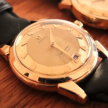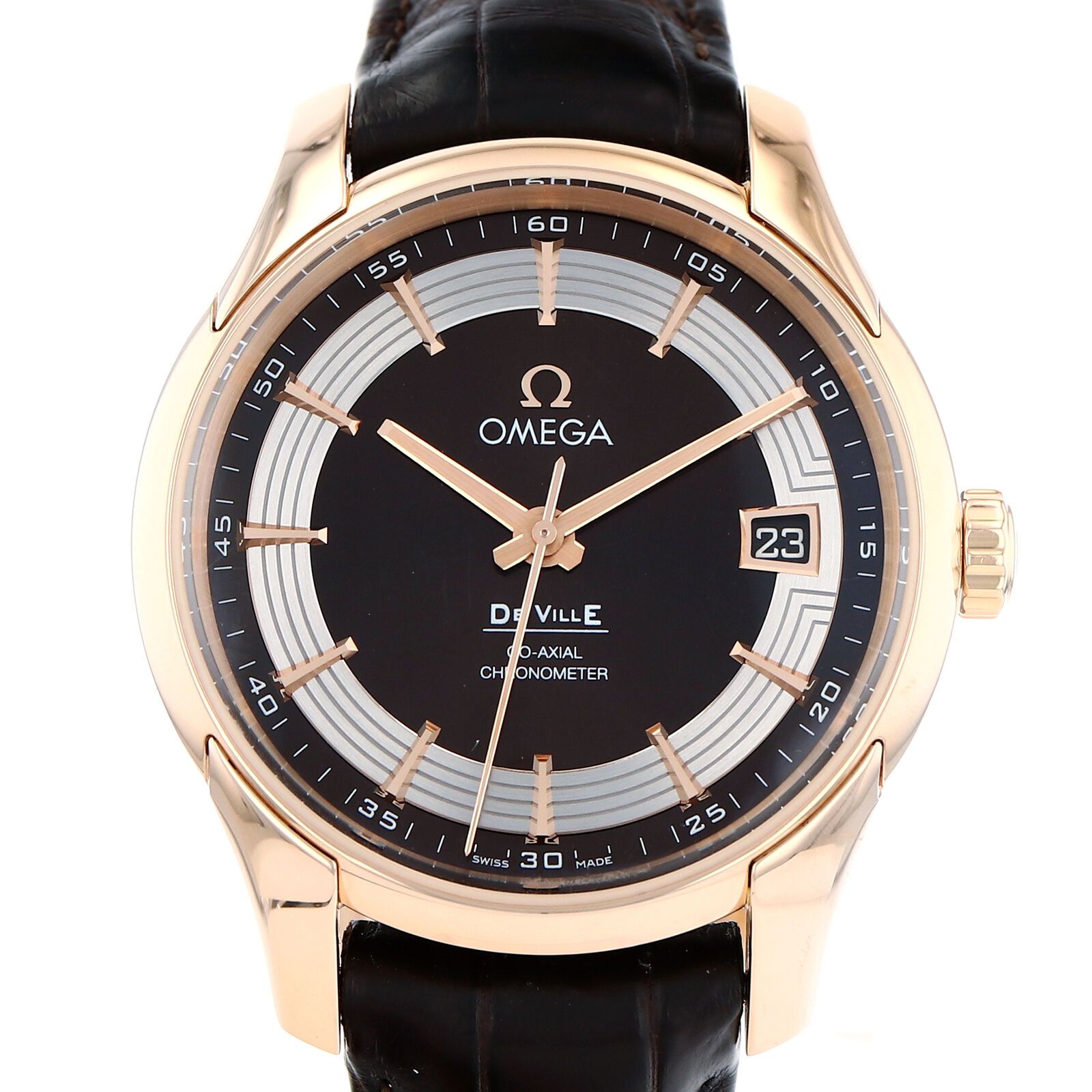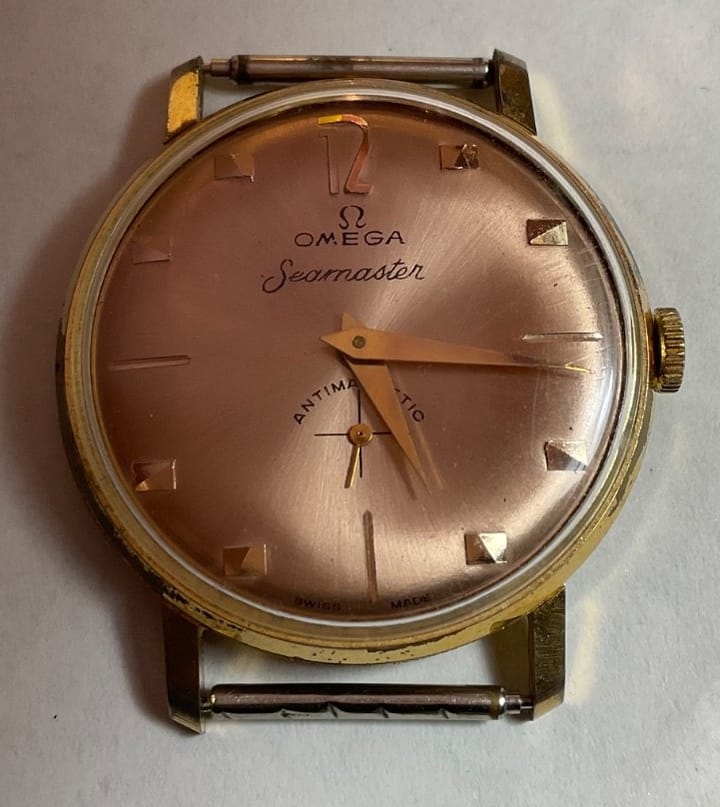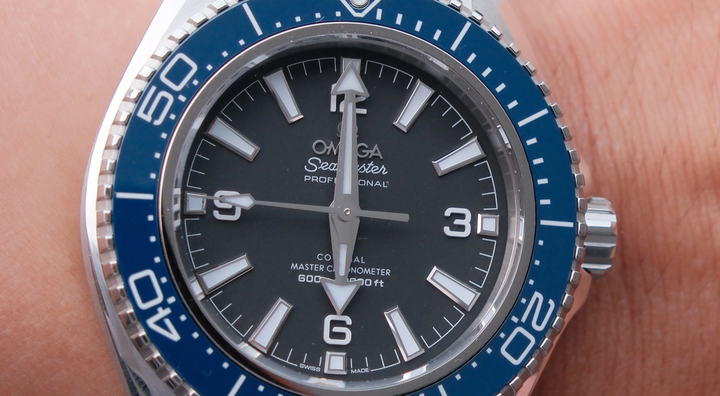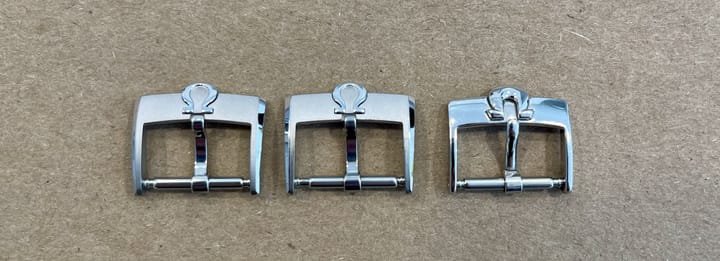Certain watches represent a watershed moment for a brand. The 1948 Omega Centenary, the 1957 Trinity, and the first Omega Constellation are just a few of Omega’s past advancements. The 2007 Hour Vision though, a model in the De Ville line, may be one of the most significant of the modern era.
A Blueprint for the Future
The Hour Vision was not just a watch to Omega, it represented the peak of the brand's design creativity, engineering prowess, and served as the flagship for the Calibre 8500 in-house movement. More than that, it signaled a significant step up in quality, finishing and market segment.
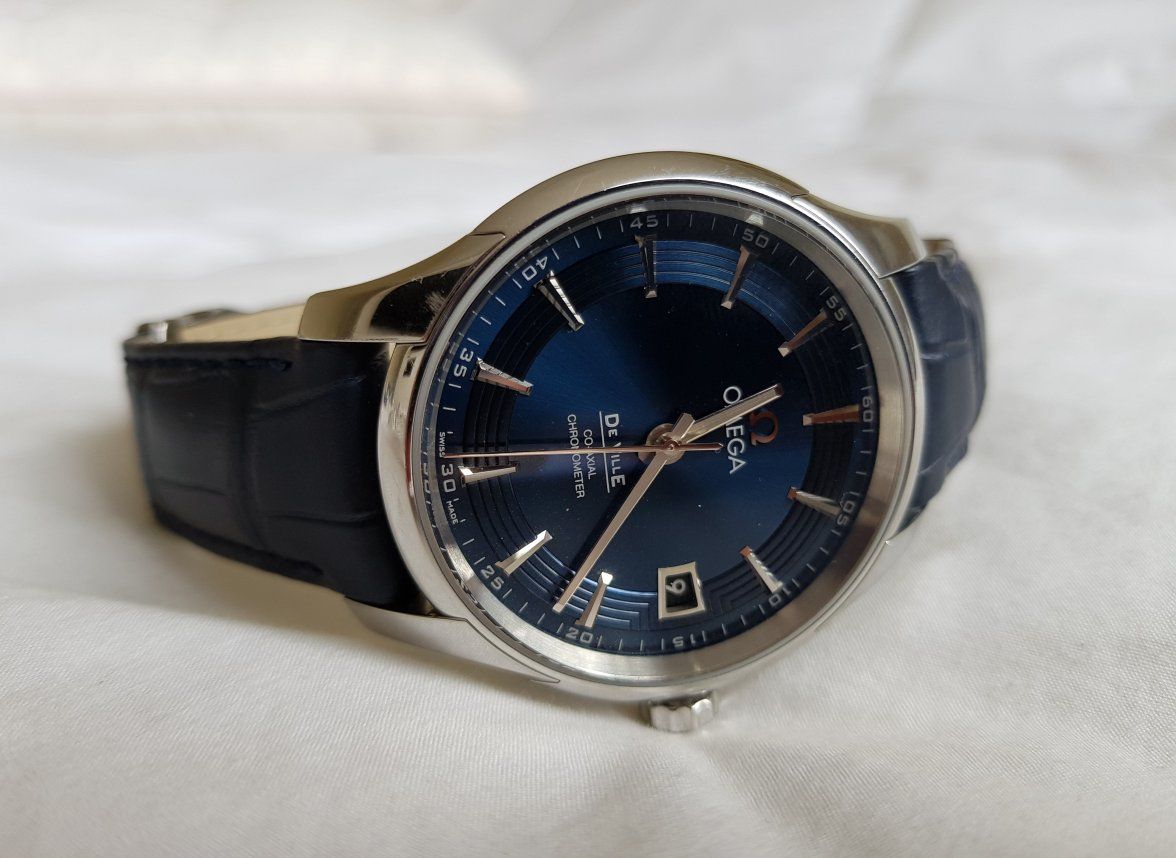
By the time Nicolas Hayek became involved with Omega through its parent SSIH in the early 1980s, the company was on its knees. Hayek wasn't even brought in to save it, the banks had brought him in to liquidate the businesses. The fact that Omega exists today, much less that it is as successful as it is, comes down to a lot of luck, and a string of remarkably talented leaders that stabilized the brand before bringing it on a long journey back to its present heights.
The 1980's was about stabilizing the company, rationalizing product lines and finding a way forward for the brand. The 1990's was about rebuilding that reputation for quality and accuracy along with brand recognition under the leadership of noted cheesemaker and occasional watch brand CEO Jean Claude Biver.
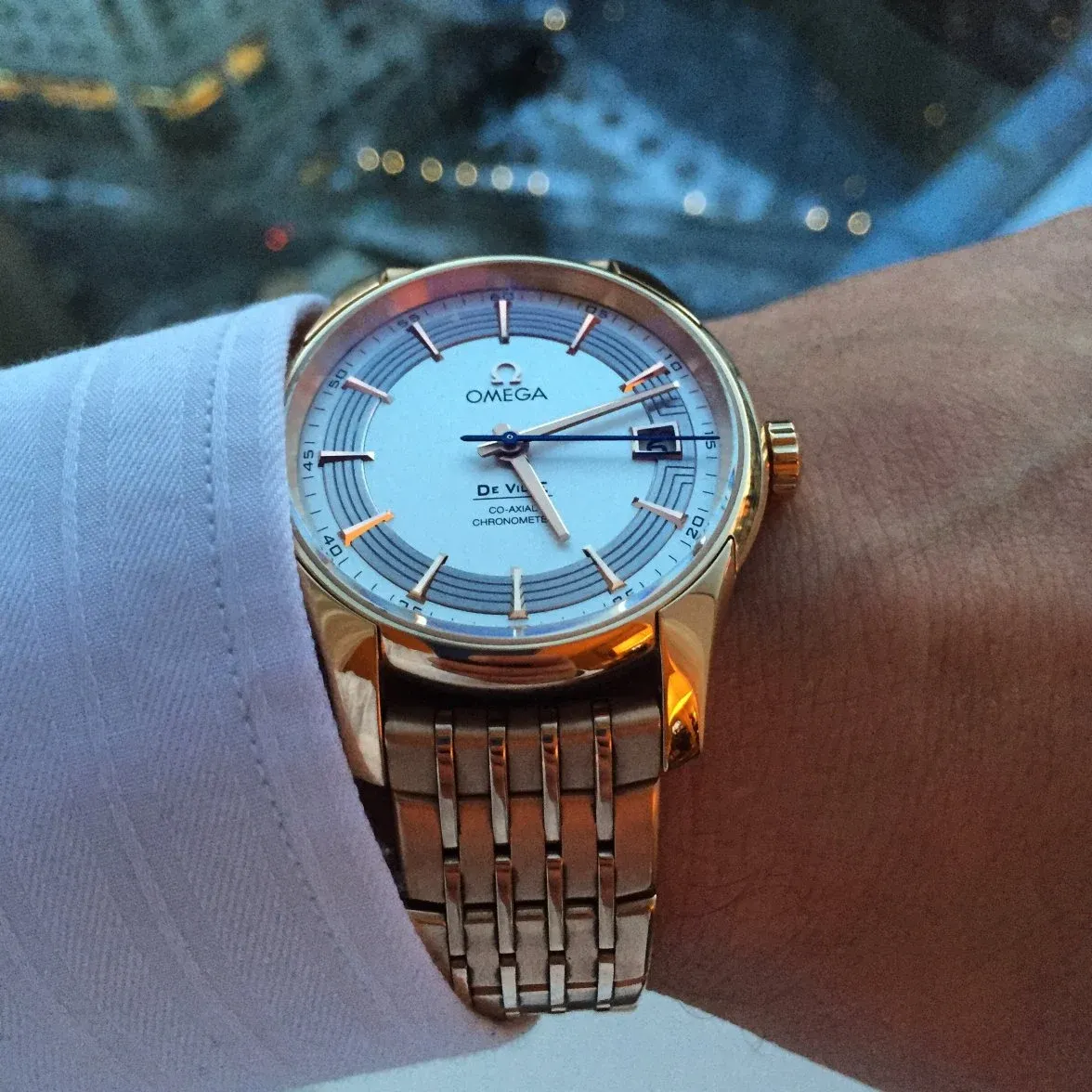
During the 2000's, Stephen Urquhart had overseen the expansion of co-axial escapements across the product line, and in 2007 the shift to the in-house Calibre 8500 and the exceptionally finished Hour Vision gave us a preview of the next iteration of Omega.
It's difficult to overstate the importance of this watch in the context of the 15 years that would follow. In-house movements, beautifully finished, expertly decorated dials, cutting edge technologies and creative use of ceramics, sapphire and Liquidmetal would proliferate across almost every product line.
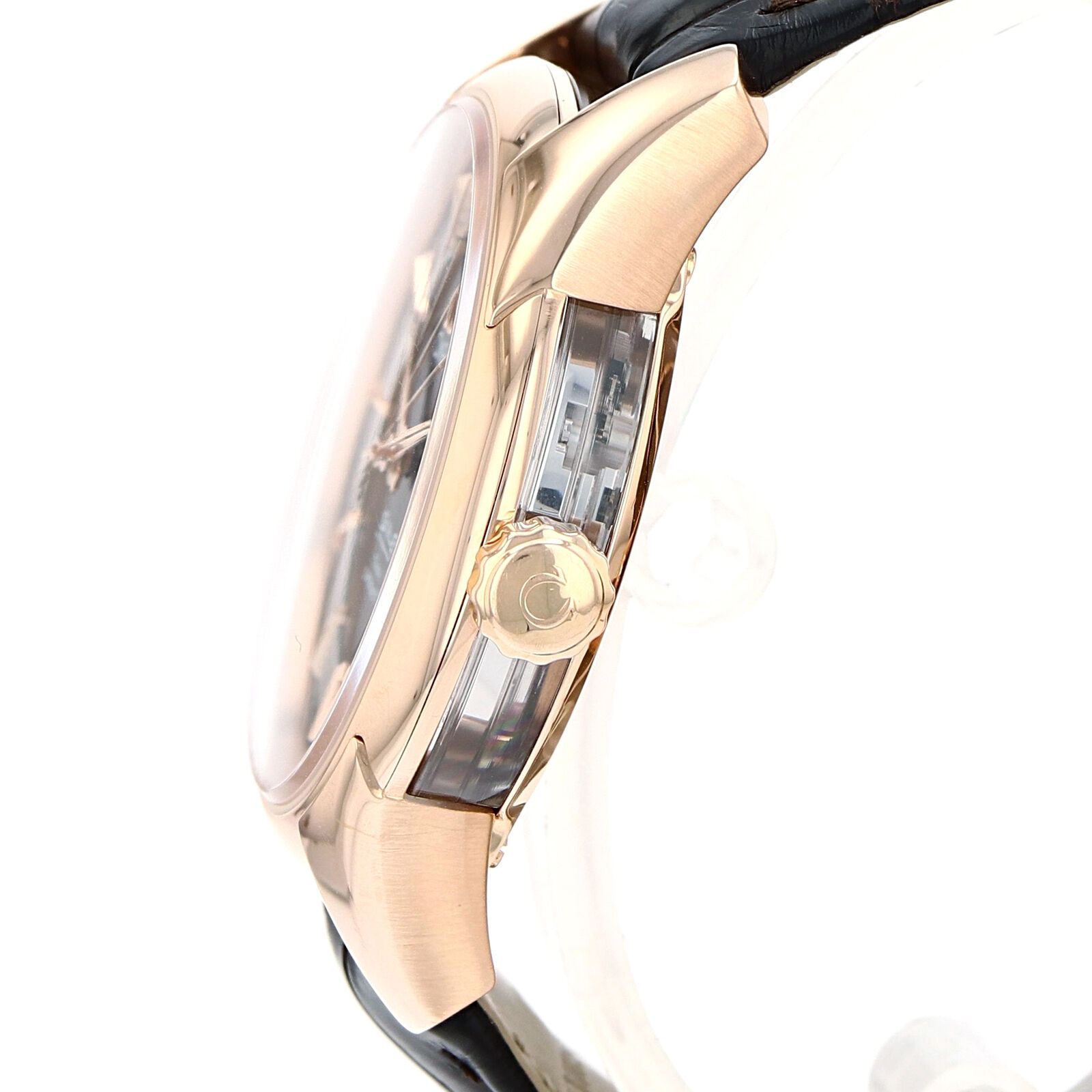
Collectors often refer to the 1950's and 1960's as the "golden era" for Omega. Their quality, finishing, and technological advancements of that time put them at the forefront of the industry. After a lost decade in the 1970's, and the crippling effects of the quartz crisis, Omega had a long fight ahead of it to regain that position.
Hour Vision was the dawn of Omega's second golden era.
Case & Bracelet
The Hour Vision case is a masterpiece of design, yet is not fully understood even by most owners.
When people talk about it, they comment that it has sapphire sides as well as a display-back, allowing you to view the movement from multiple angles, which is true, but not the full story. You see, Omega did not just add sapphire sides to a case design that also had a display-back.
On the Omega Hour Vision, the sapphire IS the case.
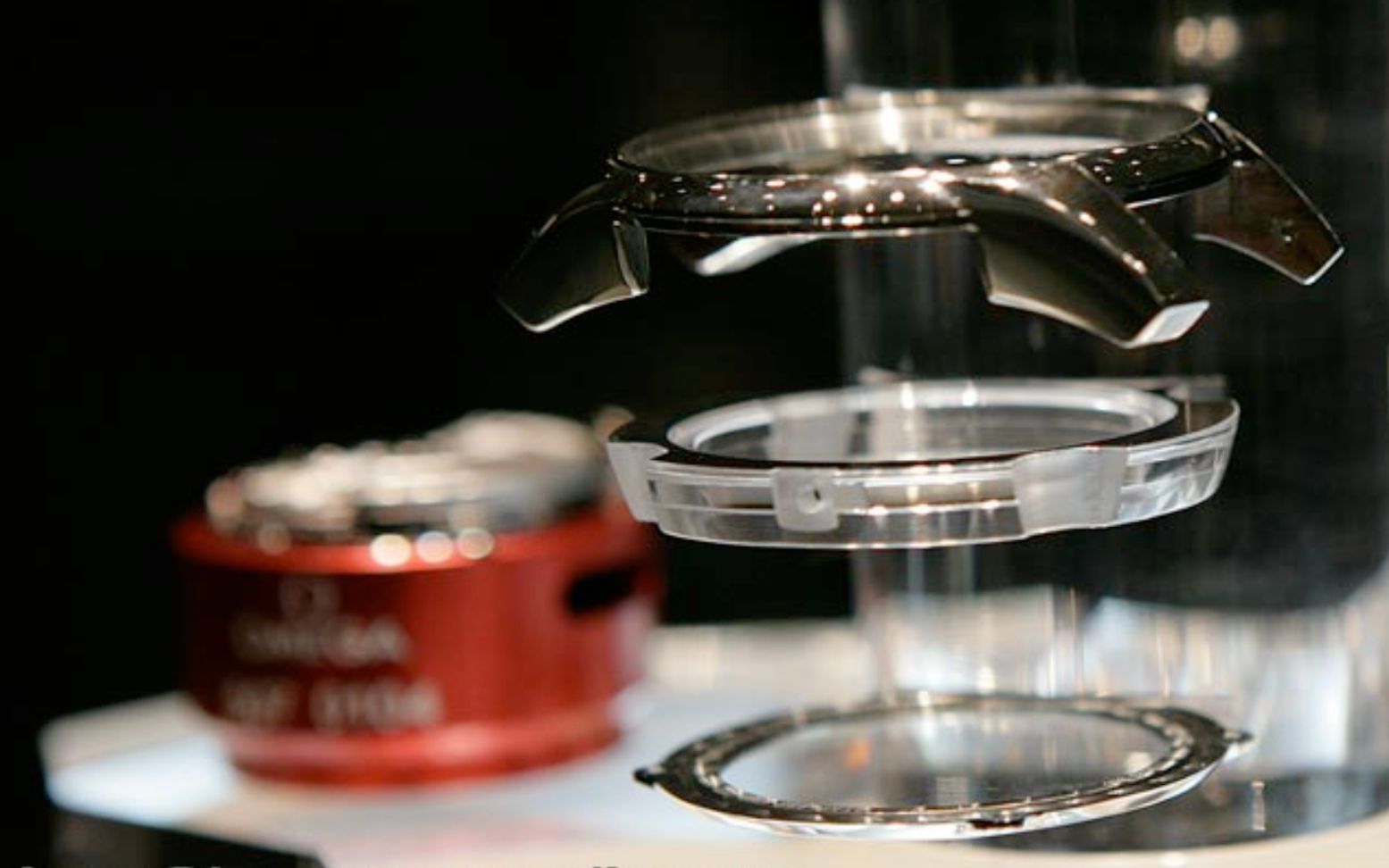
To create this watch, Omega tapped Swatch Group member Comadur SA, a company at the absolute bleeding edge of technology involving composites, ceramics, and materials science. Comadur produced for Omega a single piece of structural sapphire, that encased the entire movement, even allowing for a hole for the crown tube. The front bezel and lugs of the watch then seal to the top of this sapphire section, and a thin ring of metal with a display-back is screwed in from behind to seal the sapphire mid-case inside a thin sandwich of metal.
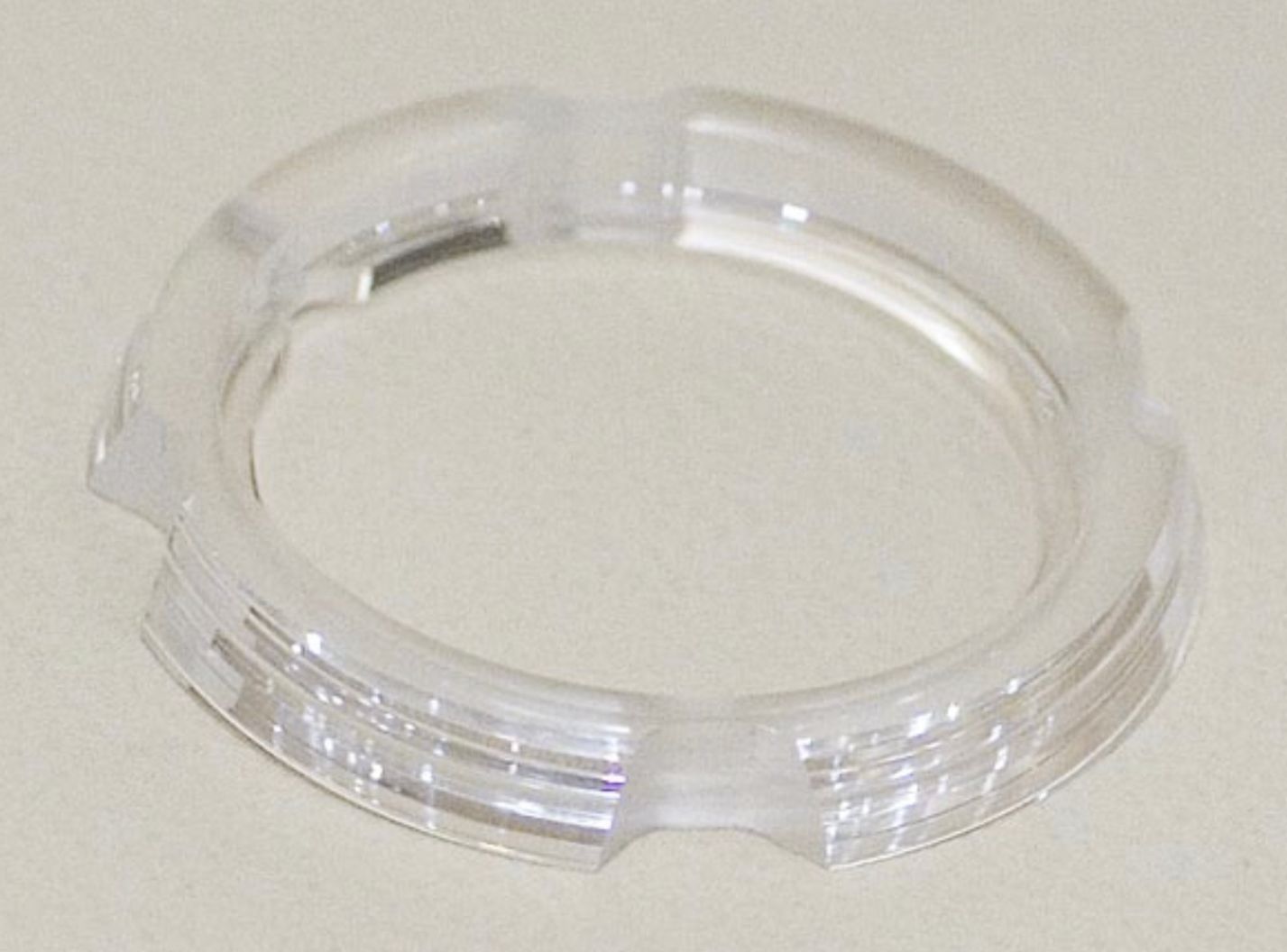
The amount of engineering and effort that went into this is genuinely impressive and there are few watches anywhere near this price point that have a design this unique and complex in their case construction.
The reason Omega went to this much trouble to make the Hour Vision special was not really about the watch at all though. Hour Vision was a halo product, a watch designed to showcase what the brand was capable of and where they were going with the Calibre 8500 movement housed within it.
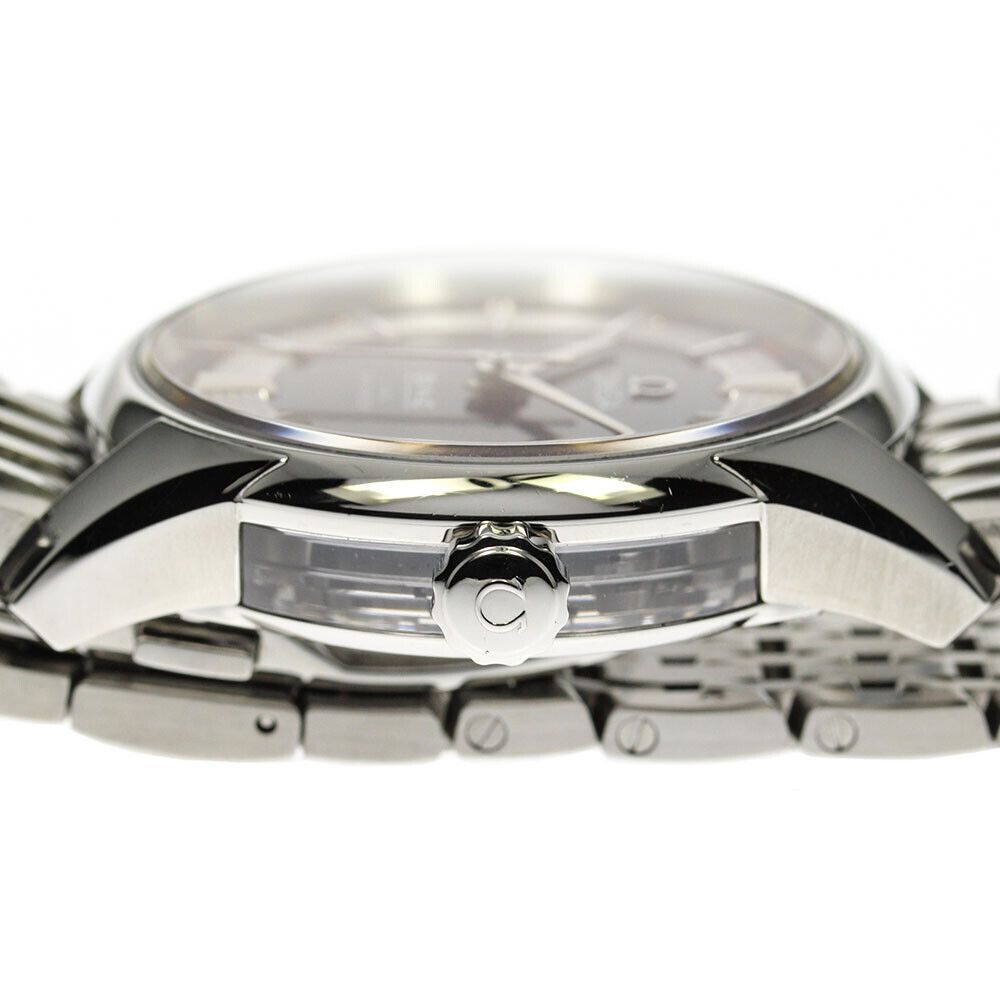
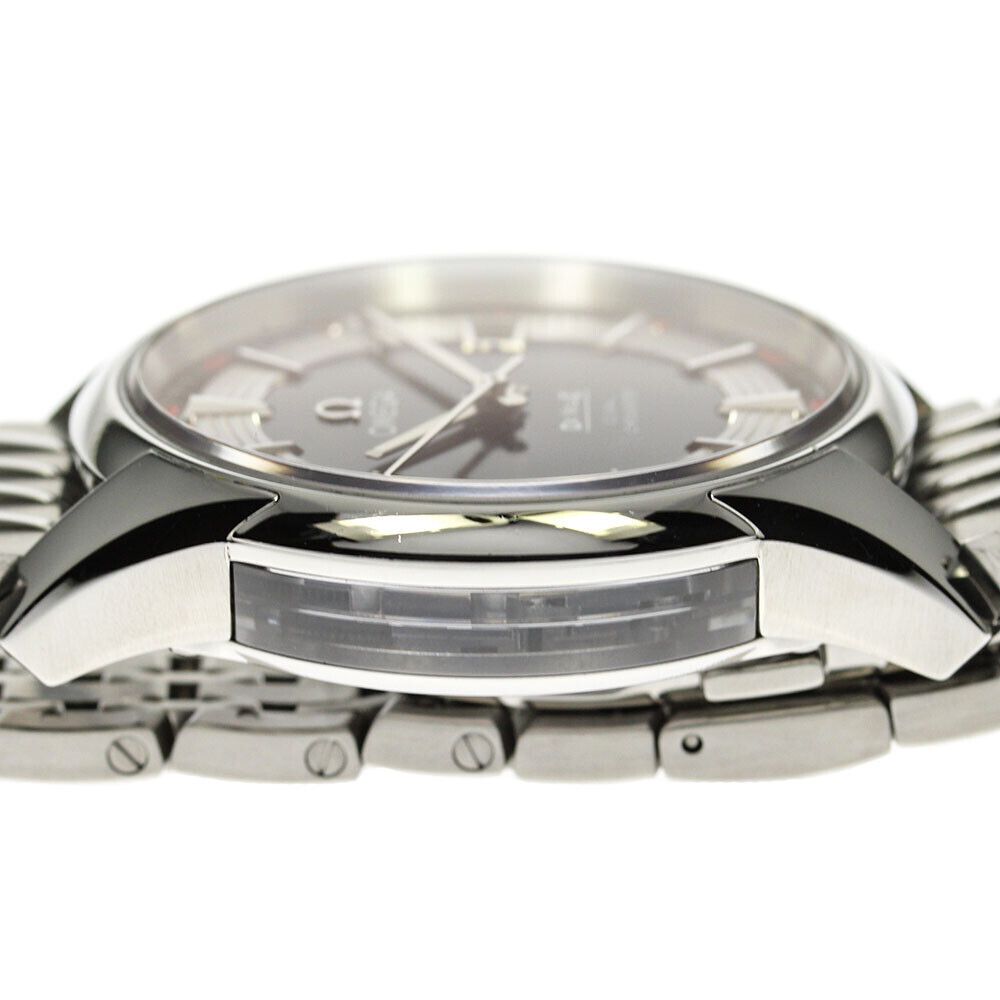
The Hour Vision case measures 41 mm in diameter and has a quite reasonable thickness of 12.5 mm for the standard Calibre 8500/8501 versions. The annual calendar version of the watch increases that thickness to 14 mm while retaining the same diameter. Something worth noting is that the sapphire mid-case actually makes this watch slightly lighter than average with the strap versions weighing only 88 grams, while the steel versions on bracelet are around 151 grams.
The Hour Vision design has proven to be quite robust too over the years, in spite of the unorthodox construction. These watches are not prone to leaks, are more resistant to case damage and scratches than most given their strong sapphire mid-case and are fairly forgiving when it comes to polishing.
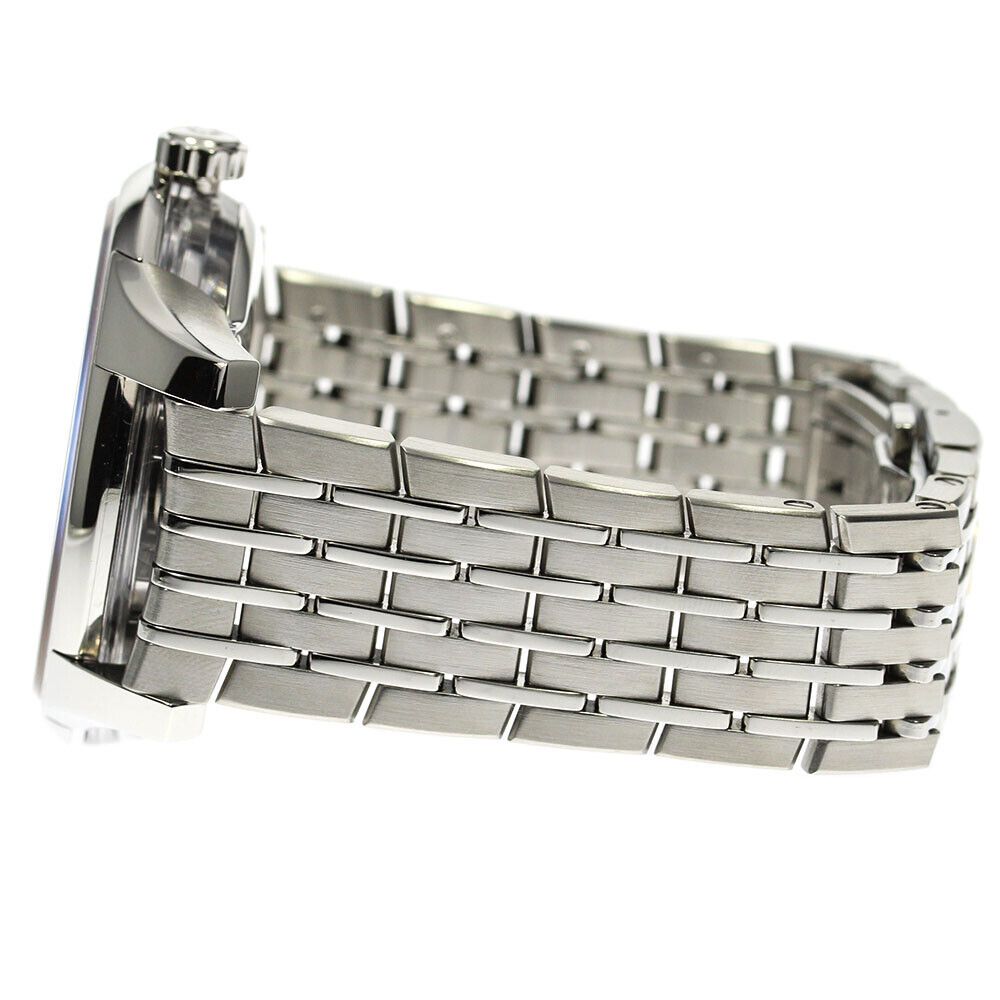
The bracelet on the Hour Vision is a somewhat unusual design which harks back to the beads of rice bracelets of old. It does not sit flush with the lugs, allowing more light to enter the sapphire mid-case from above and below. It features a bi-fold butterfly clasp design with an Omega logo on the cover.
A great many Hour Visions, and all of the blue dial variants were sold on leather strap rather than the bracelet and the strap is a great look with the single-fold deployant clasp. That said, the bracelet is superb and fits this watch so well that it is worth trying to acquire one if at all possible.
Movements
Hour Vision introduced Omega's first new in-house movement in many years, the Calibre 8500. This movement was a monumental departure from the Calibre 2500 previously used by Omega and would serve as the basis for the next 15 years of Omega movement evolution.
It is hard to believe it was 15 years ago that Calibre 8500 was released, it still feels so recent of an event, but in the years since we have seen that calibre evolve into a range of sub-variants and successors. Today we have the Calibre 8400, 8800 & 8900 series of METAS certified Master Chronometer movements with superior specifications and more compact dimensions, but all are based on the original Calibre 8500.
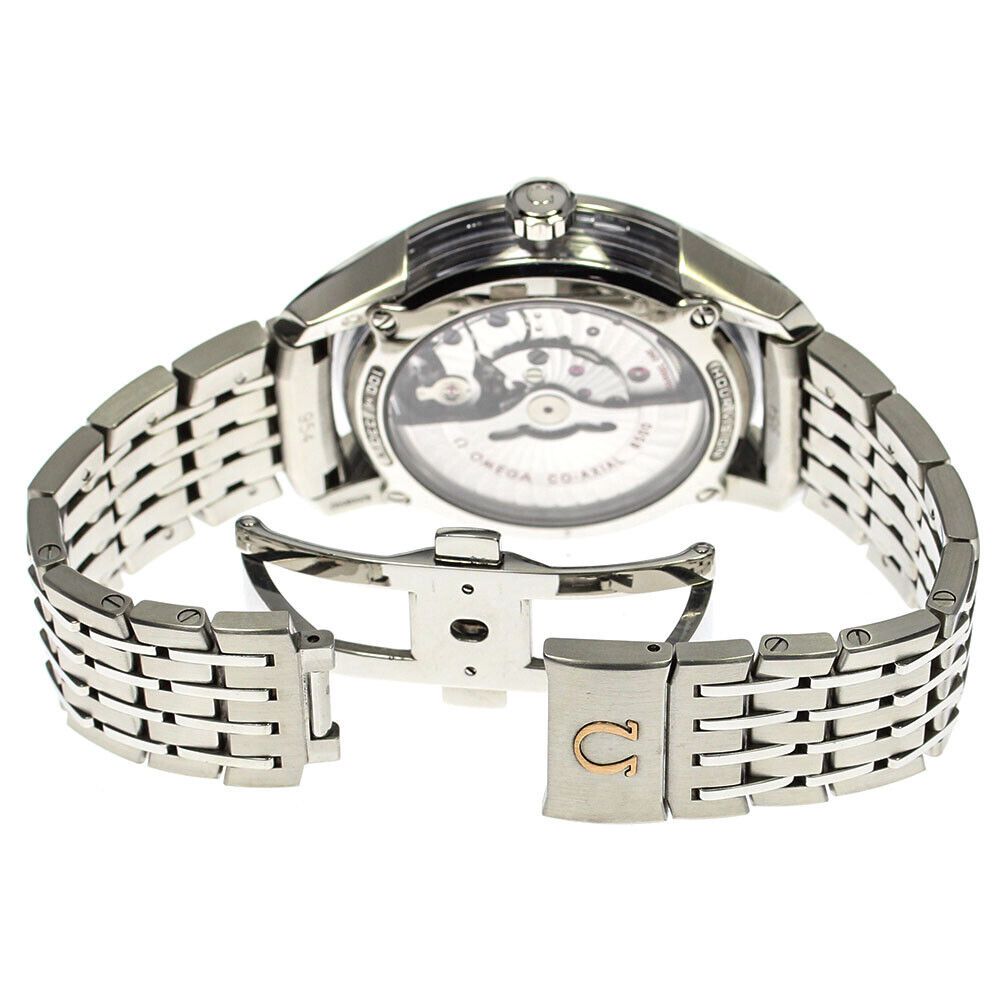
The Cal 8500 featured a 3-level Co-Axial escapement, leaving it immune to the problems associated with early Calibre 2500 movements. It beats at 25,200 vph, is chronometer certified, and features hacking along with a jumping hour hand for date setting and travel convenience. The bi-direction automatic winding system powers two barrels for a total of 60 hours power reserve.
The aesthetic design of the movement is far more impressive than prior Omega models, with Cotes de Geneve en Arabesque in a radial, turbine-blade like finishing setting it apart from other watches. Also interesting and somewhat unusual was the Si14 silicon balance wheel, identifiable in matte black against the bright rhodium finishing. Given the effort put into making the Calibre 8500 stand out, it's no wonder they went to the trouble of designing a watch like the Hour Vision specifically to show it off as best as possible.
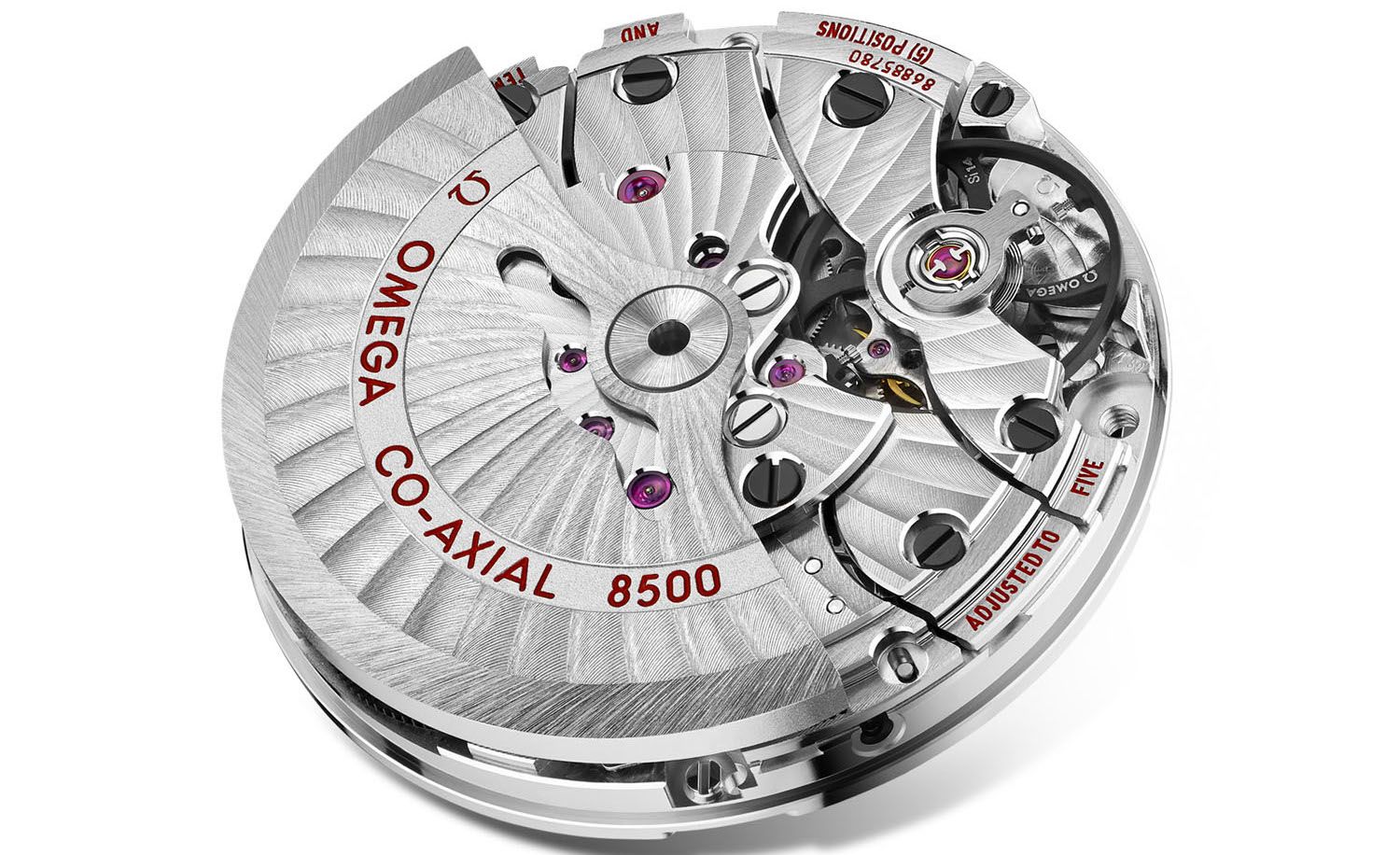
While all movements have some teething issues when new, including the Calibre 8500, the movement has been a solid performer over time, with early issues resolved at time of service. These movements can be handled by any qualified watchmaker with access to an Omega parts account and should perform exceptionally well if correctly maintained.
One point of conjecture that comes up often on the internet is whether the Calibre 8500 is truly "in-house" in the strictest sense of the word or not. This is due to the fact that while the Calibre 8500 and 9300, along with their descendent were designed exclusively for Omega's, manufacturing was taking place on dedicated production lines at ETA facilities. Really it doesn't matter in the slightest, ETA is a Swatch Group company as is Omega, and ETA possess greater manufacturing expertise than anyone in the Swiss watch industry. Just as Omega leans on expertise from Comadur SA for high tech ceramics and composites, it makes sense to make use of the best talent available in the group, and this leads to a better product.
Variants
The Hour Vision came in a variety of forms over its very long production run and the name has been re-used several times for watches that lack the sapphire mid-case that earned this watch its unique name. The variants we will talk about here are strictly the original Hour Vision design only, including precious metal, annual calendar, and limited edition models.
Standard
The regular Hour Vision released in 2007 came out in a black dial and a silver-white dial. The dials on these watches are something quite special, there is applied 18K white gold hour markers and an applied date window surround. In addition, there is an elegantly engraved metal ring under the hour markers which adds more depth to the dial and separates the center section from the outer minutes track.
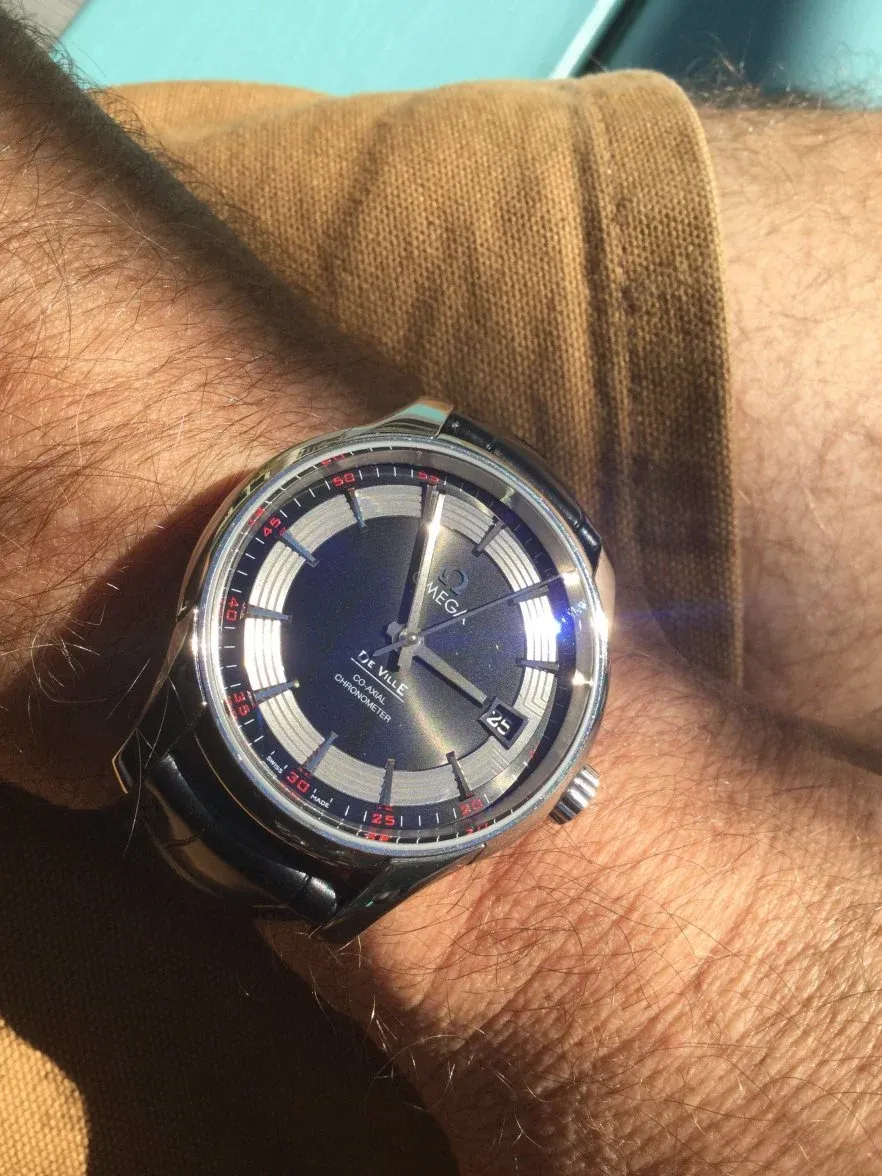
The white dial features a blue second hand for a contrasting splash of color, while the black dial uses a silver hand but incorporates red minute indices on the outer track. It is worth noting that the Hour Vision family do not have luminous material on any model at all, which is rather fitting for a very dressoriented piece like this.
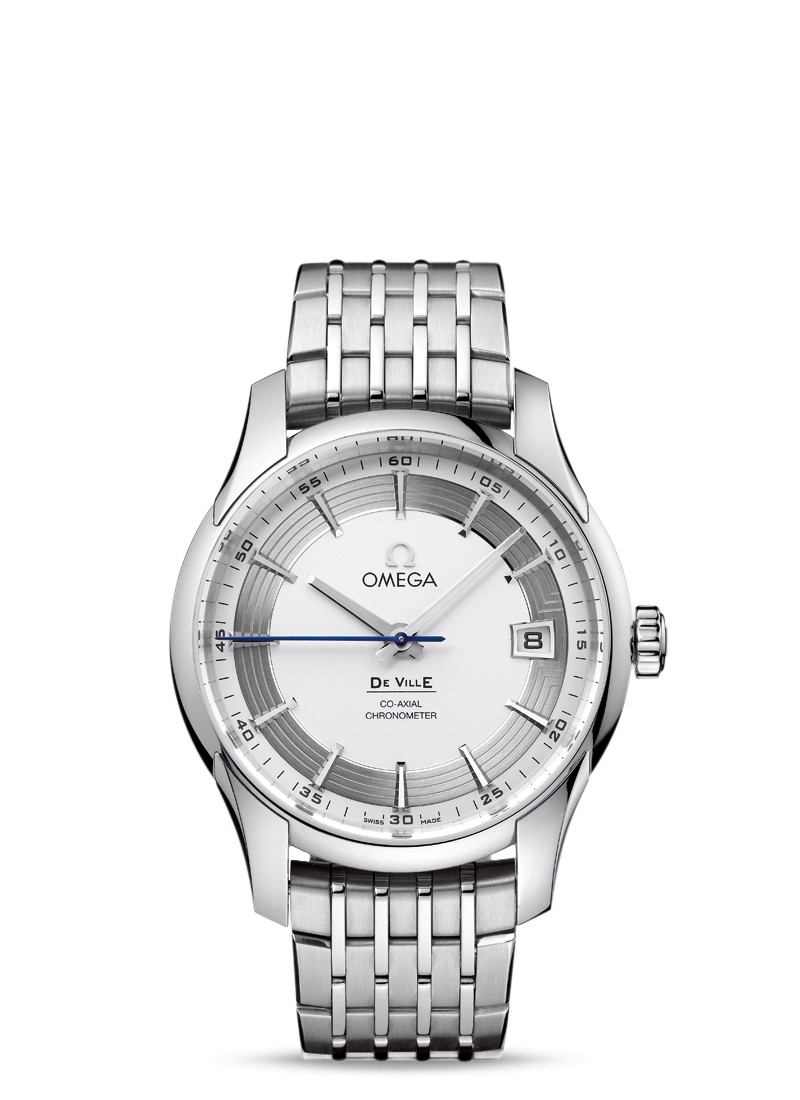
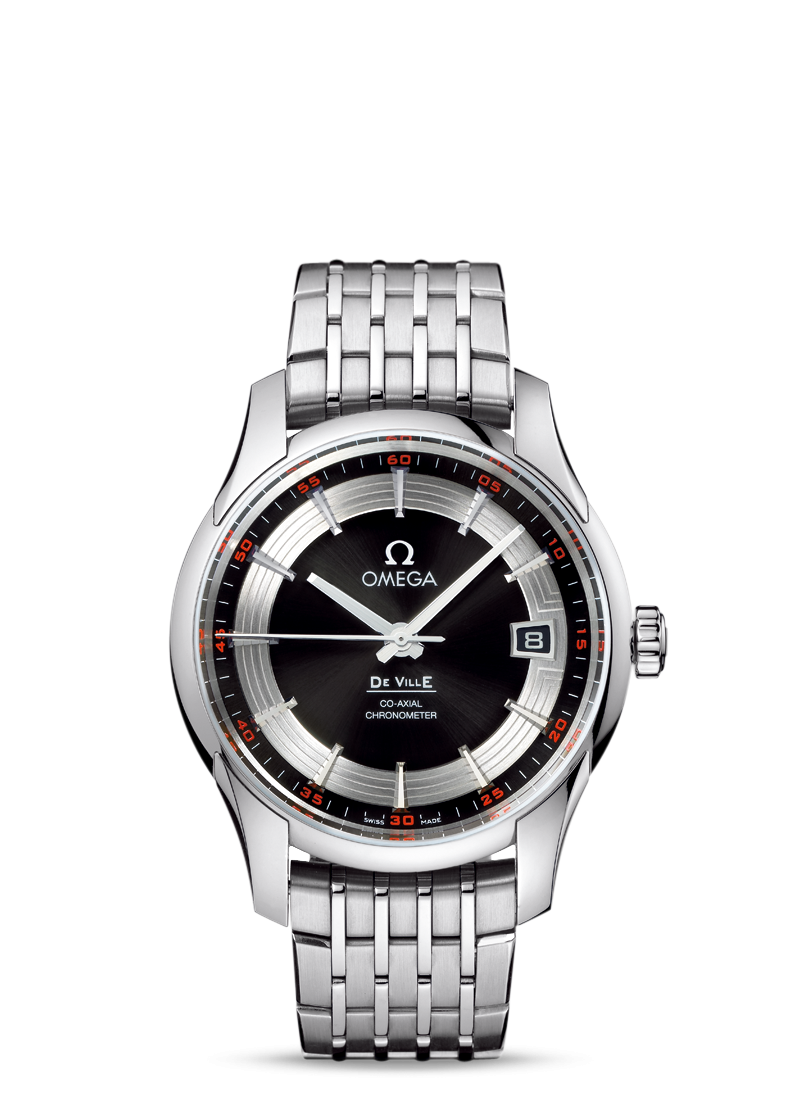
The strap versions of these feature one additional option in the form of the Orbis Blue edition. This watch is not strictly a limited edition, but was produced in partnership with, and in order to support Orbis, a flying eye hospital which does remarkable work around the world.
The Orbis blue is a bit different in that the engraved ring under the hour markers is the same shade of blue as the dial, just with a different texture. It was produced from 2011, several years later than the other versions and while it was never available with a bracelet from new, it can be fitted with the Hour Vision bracelet after the fact.

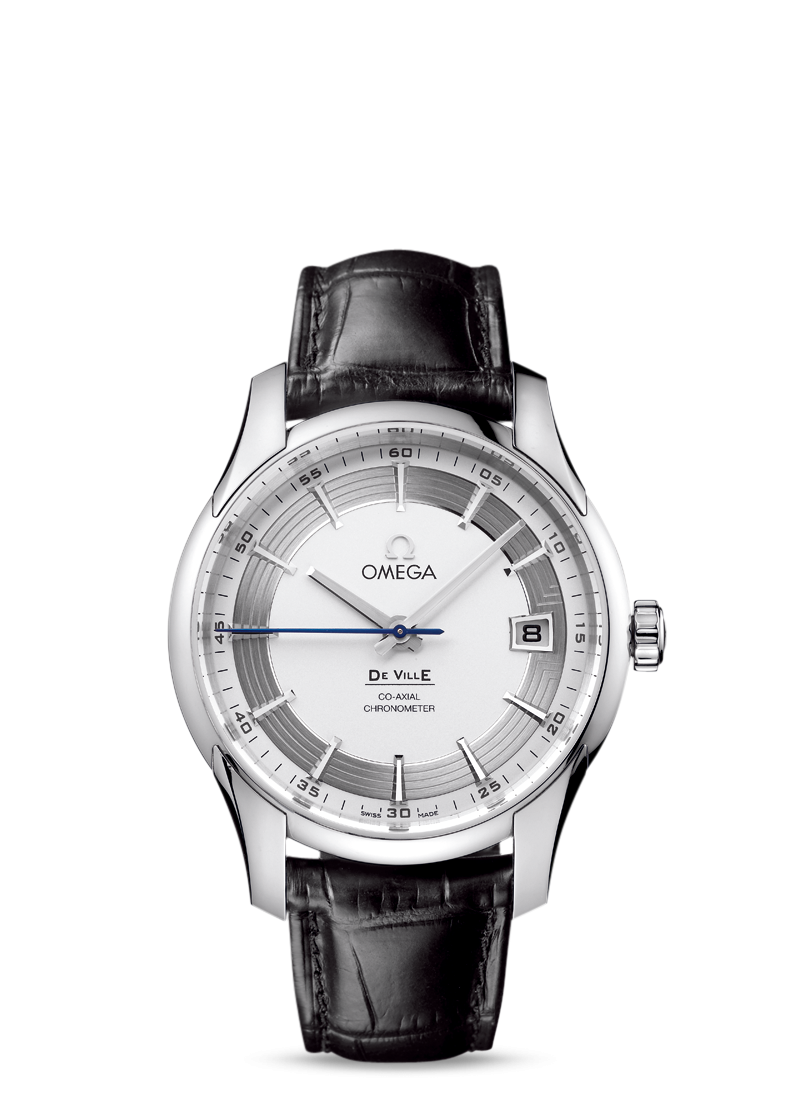
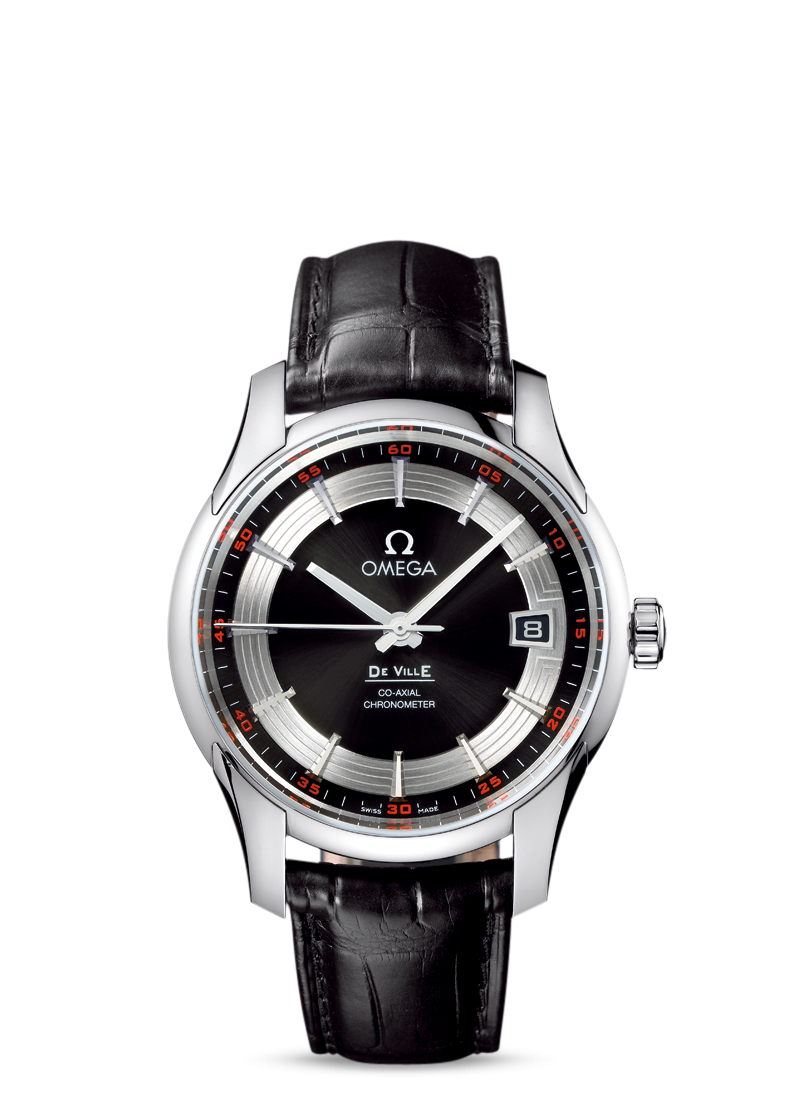

Annual Calendar
The annual calendar version of the Hour Vision is actually a remarkably uncommon watch. The movement powering it is the Calibre 8601 / 8611, which is based on the 8500, but with a very significant amount of modification to allow for the annual calendar complication.
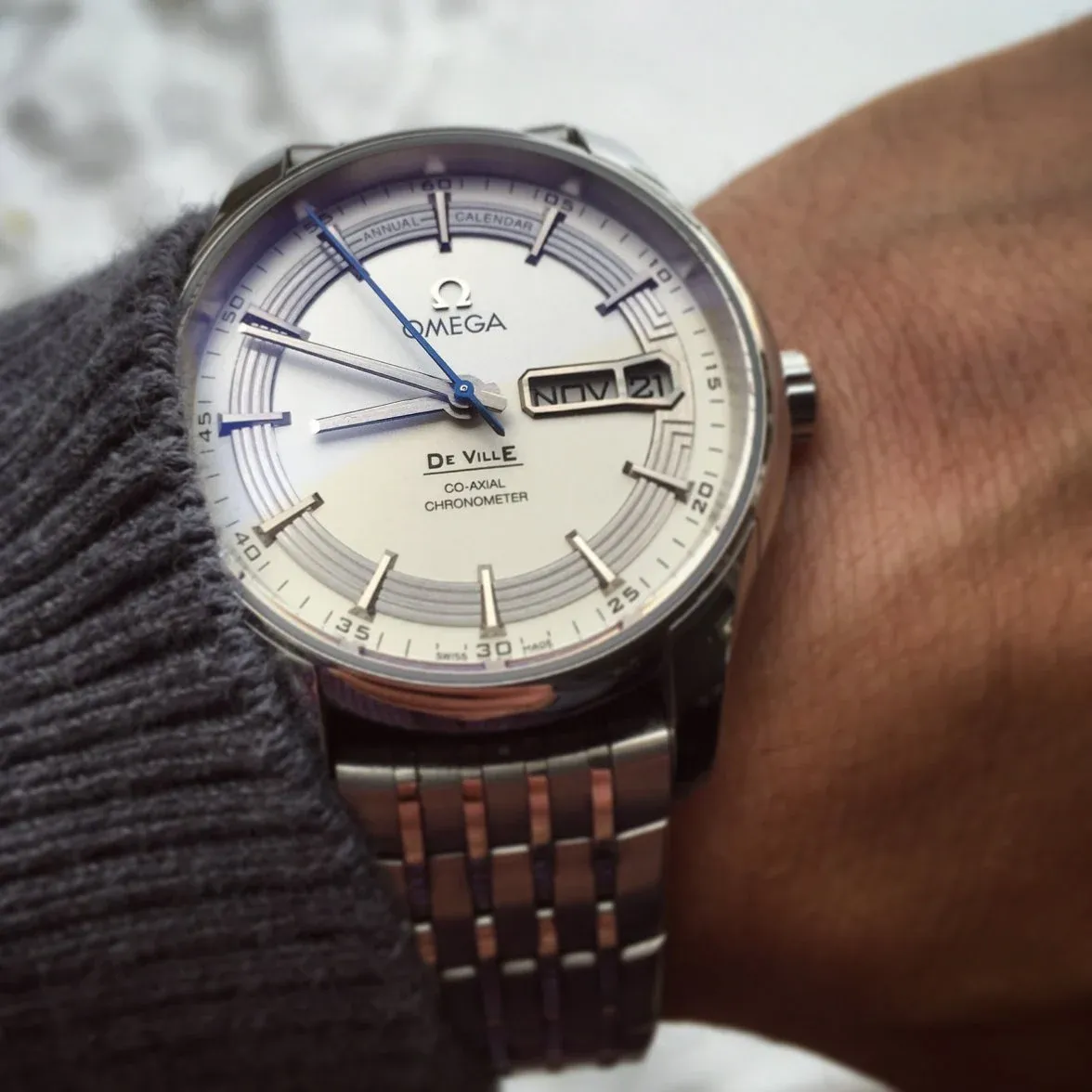
Part of the reason these watches are so relatively uncommon is that on the surface they look almost the same as the regular Hour Vision, it doesn't seem to add all that much, just one extra window. Yet what it does is remarkably complex.
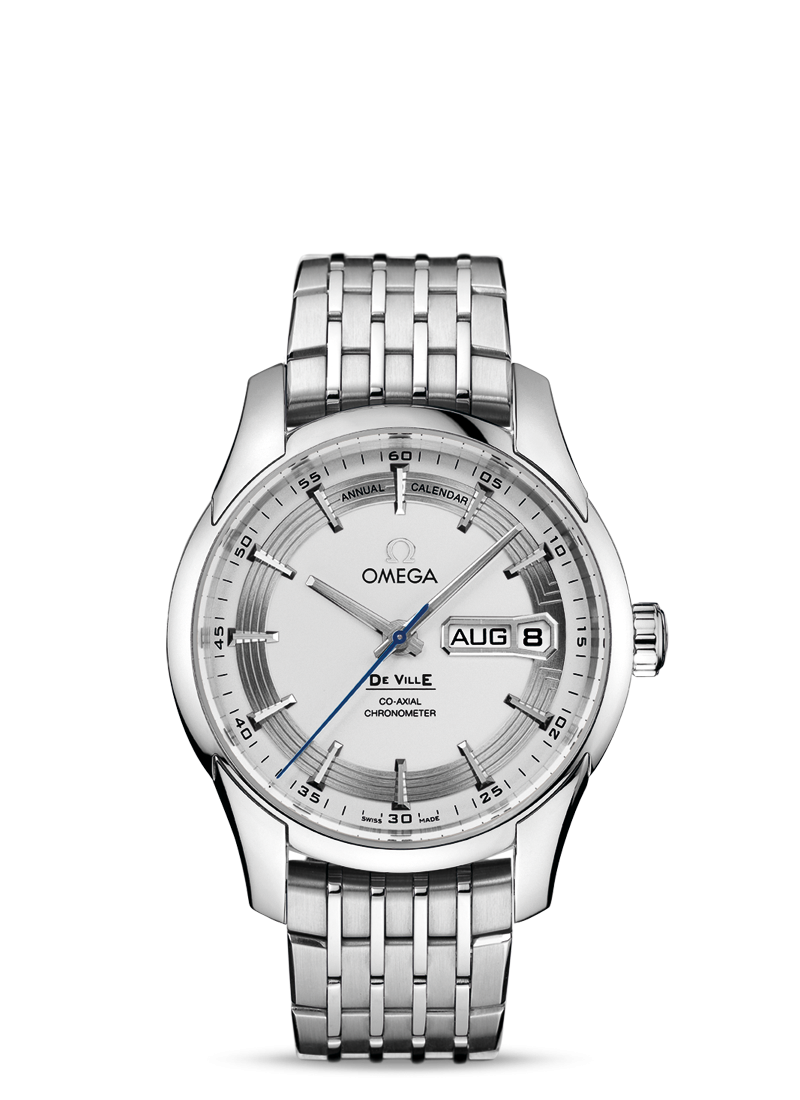
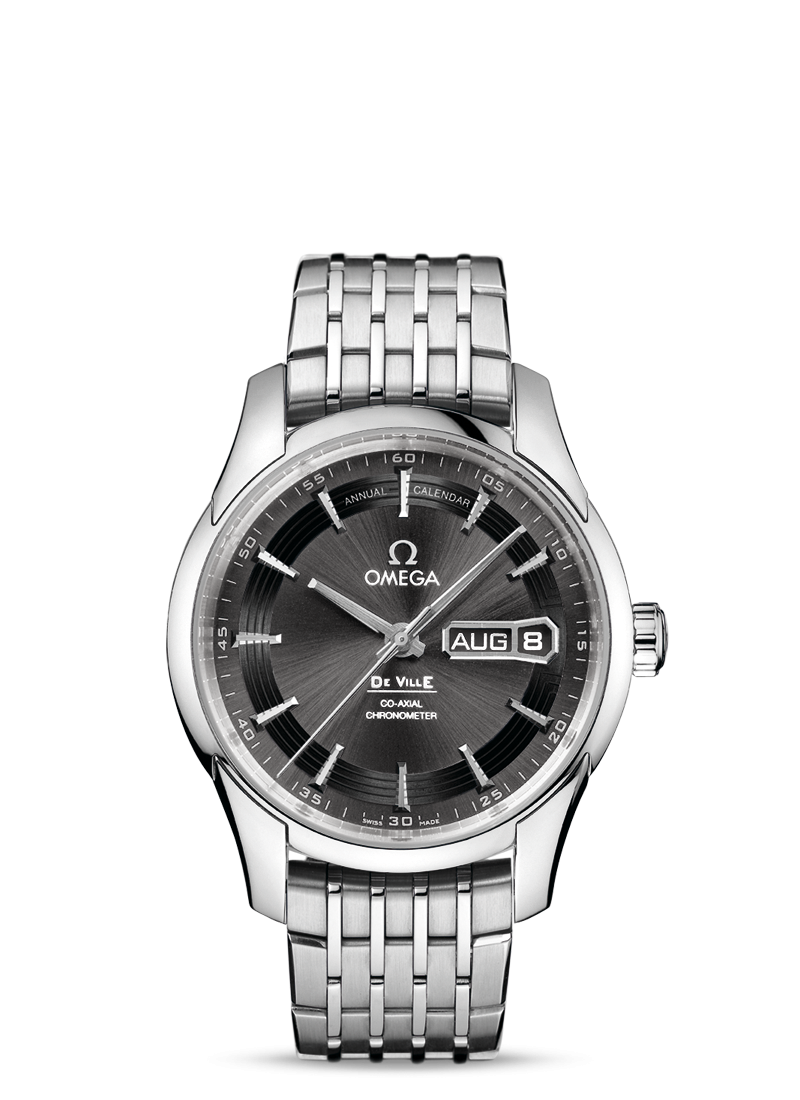
The annual calendar only needs to be set once a year in February, the remaining months of the year are effectively mechanically programmed into the watch, such that it will automatically skip ahead two days at the end of any 30-day month. This is quite a complex thing to achieve, especially in a small package. It requires vastly more parts and engineering than something as simple as a day-date complication, yet that complexity isn't immediately apparent.
That really is the reason why they never flew off of the shelves, as the added price for this complication was very significant, and justifiably so, yet the complexity was not all that apparent when looking at the watch next to the Calibre 8500 version.
Despite the small numbers, prices have never been that high on the secondary market and used examples are quite a bargain considering how special the movement is.
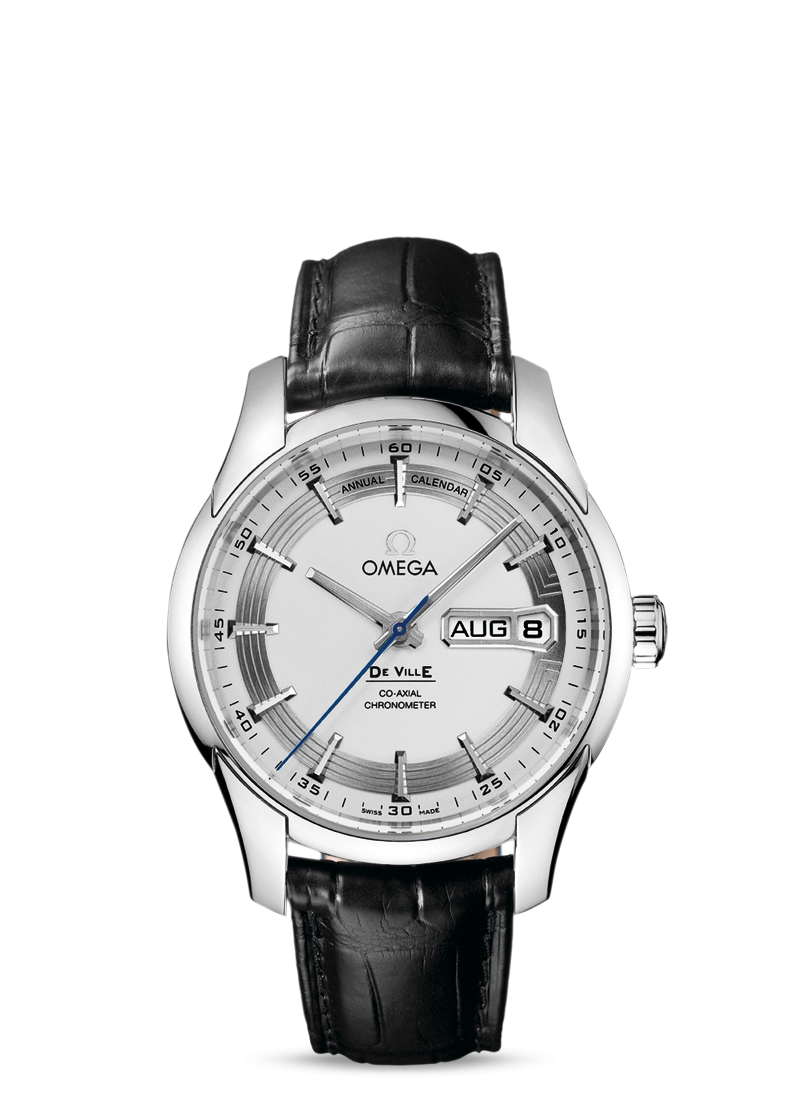
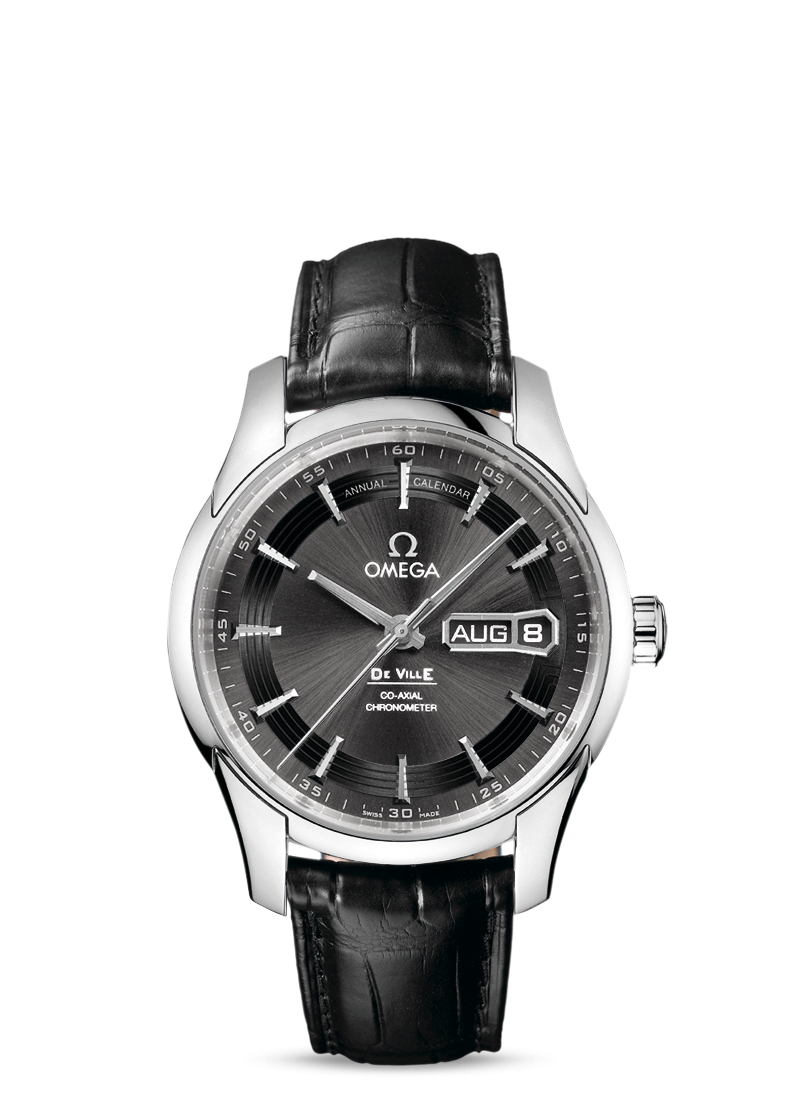

The strap versions of the annual calendar similarly include an Orbis blue edition as the Calibre 8500 version does. It should also be noted that while the white version of the annual calendar is almost the same as the date only version, the black dial is quite different. It features a dark metallic black starburst dial with a black metal ring under the hour markers similar to the Orbis blue edition.
Precious Metal
The precious metal versions of the Hour Vision include both regular date only versions and annual calendars and come in both bracelet and strap versions. These watches were quite costly when new, and understandably so as they are simply spectacular.
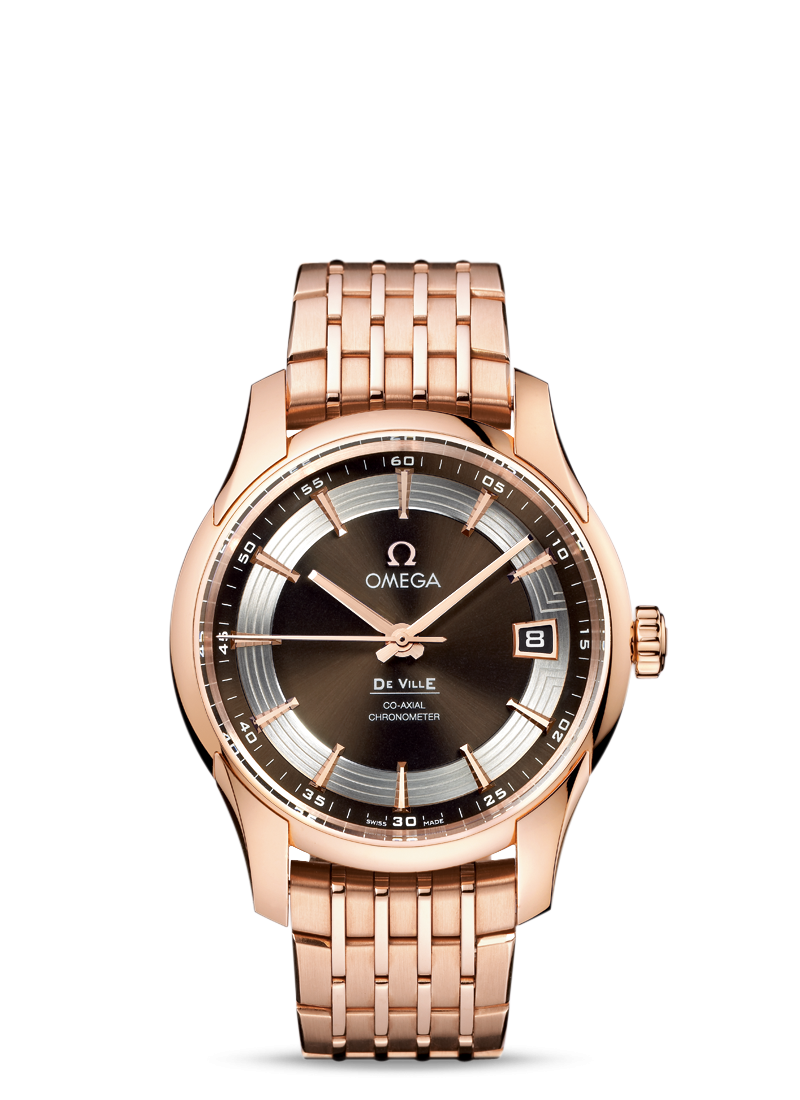
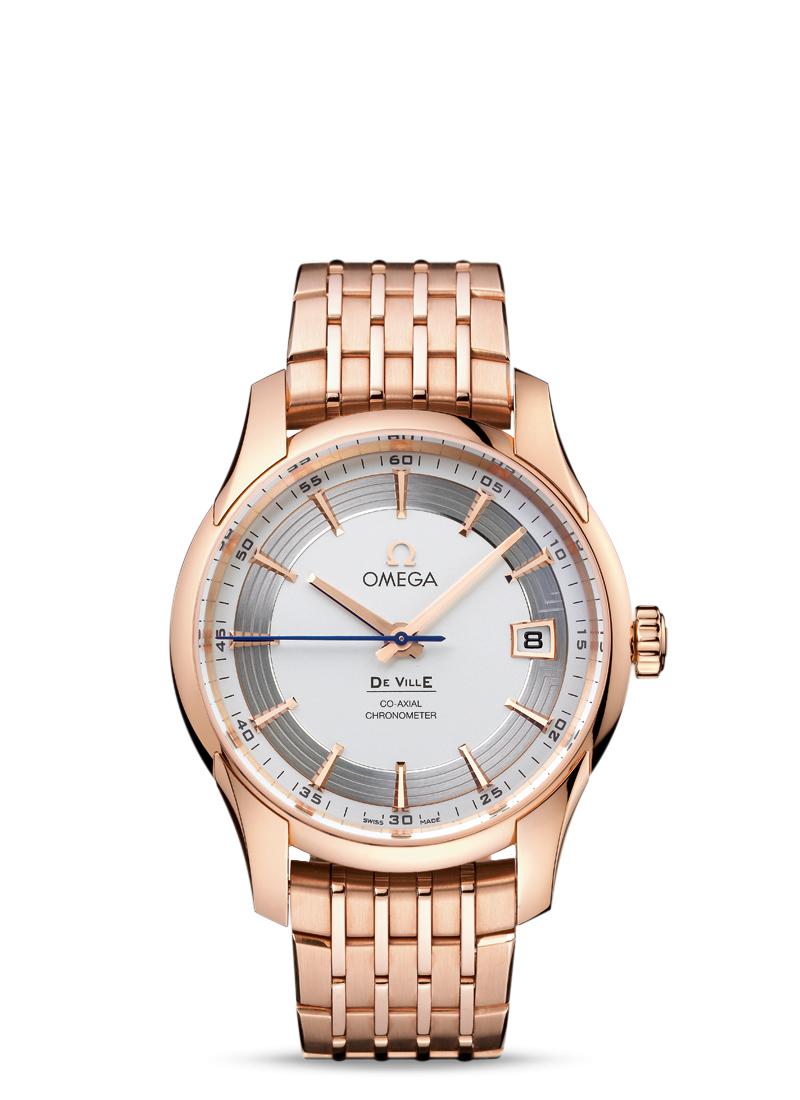
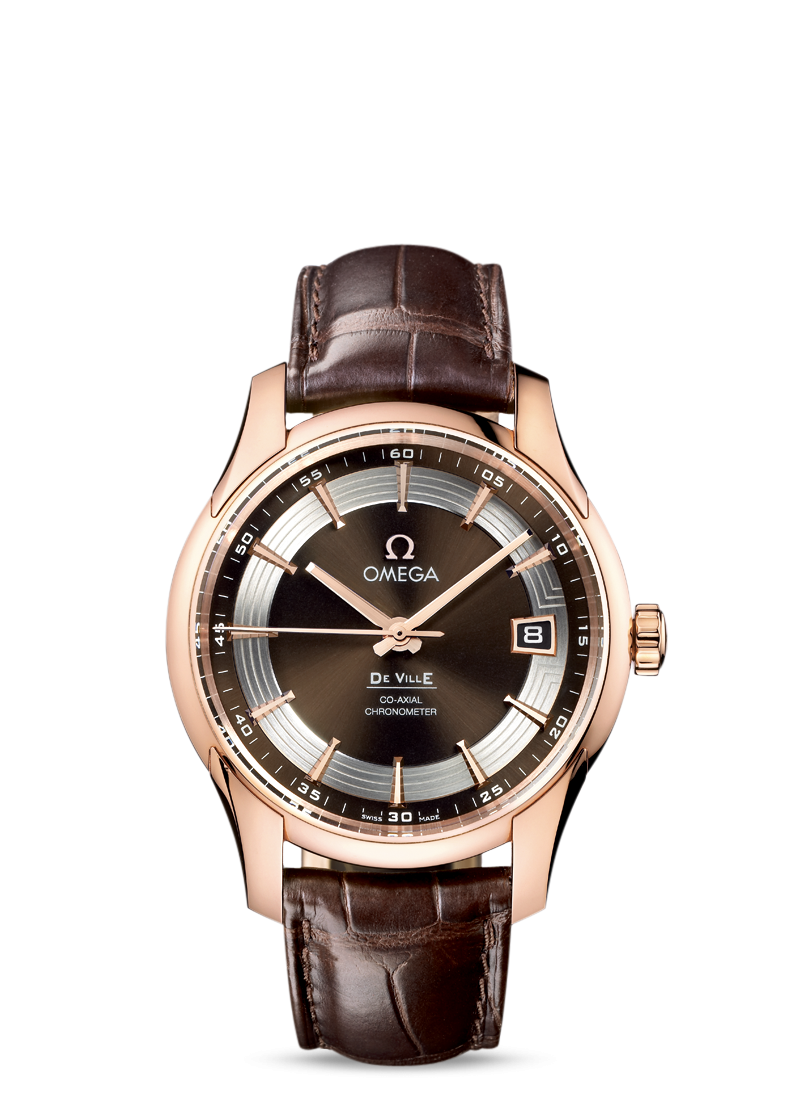
These gold versions are all only available in red gold, with the exception of a single limited edition in white gold.
The movements used are the Calibre 8501 and 8611, which are modified versions of their base 8500 and 8601 movements fitted with a red gold rotor in place of a regular rhodium plated one. Additionally, a rose gold balance bridge is fitted as well to give a significant splash of color to the movement, matching the case.
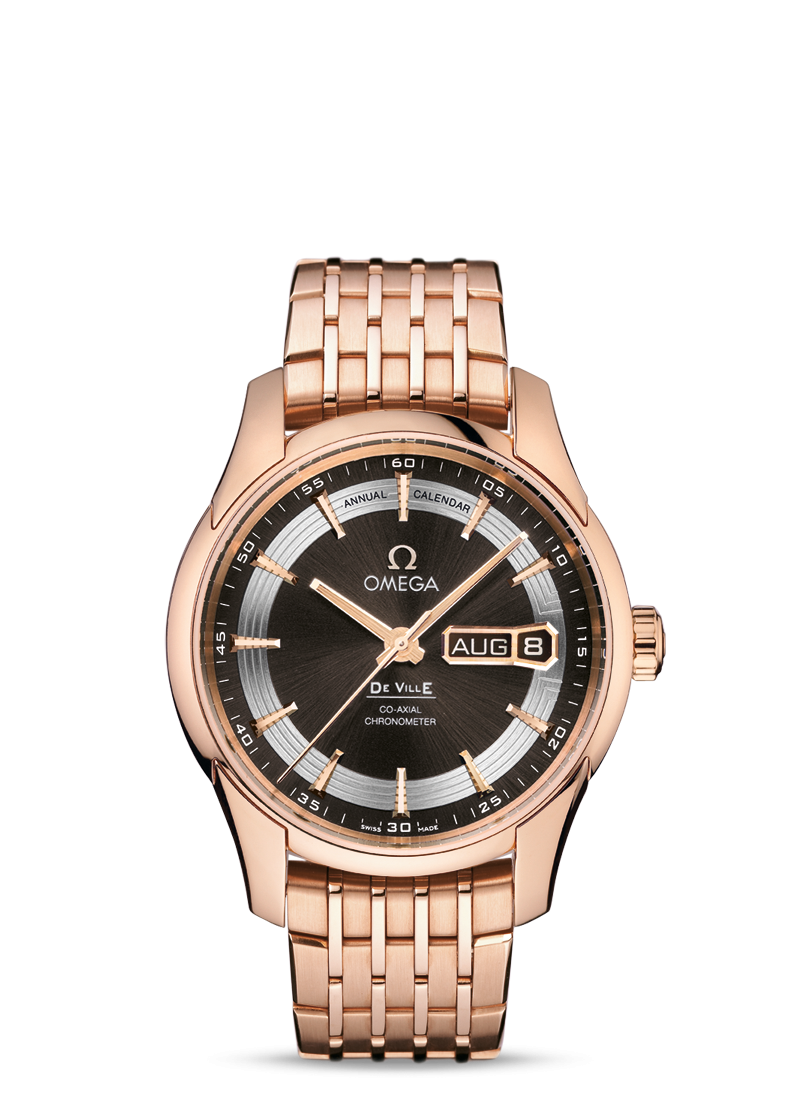
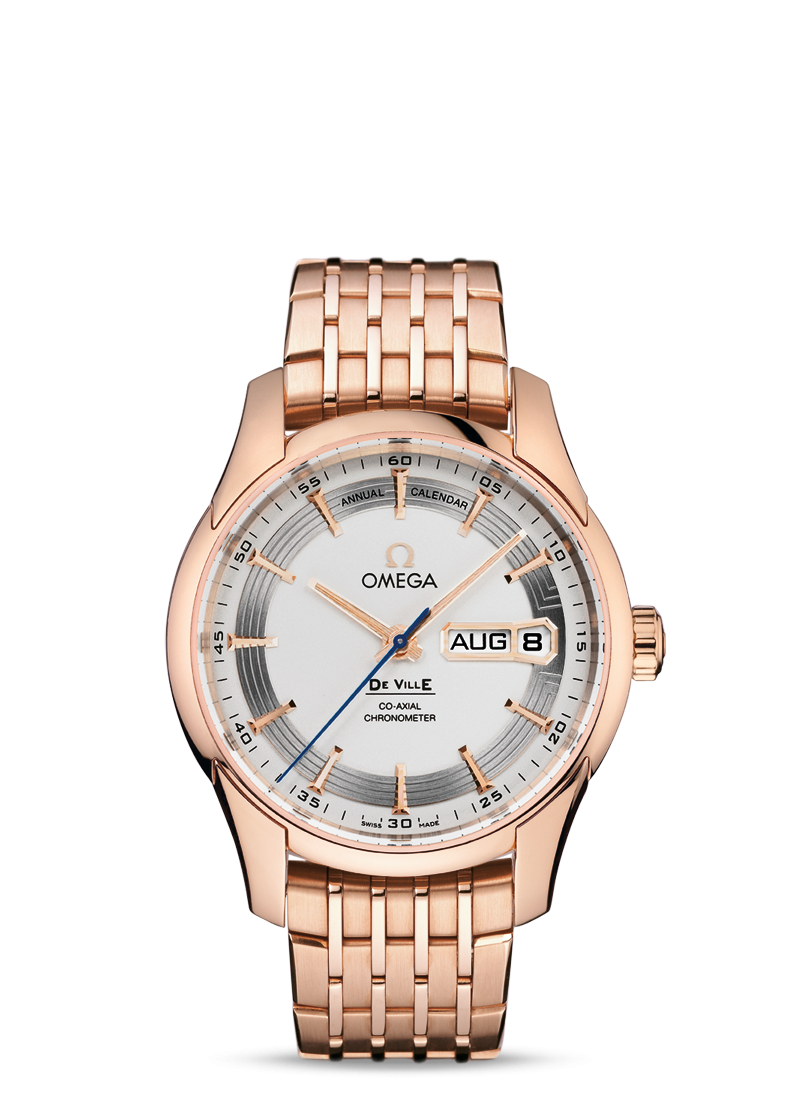
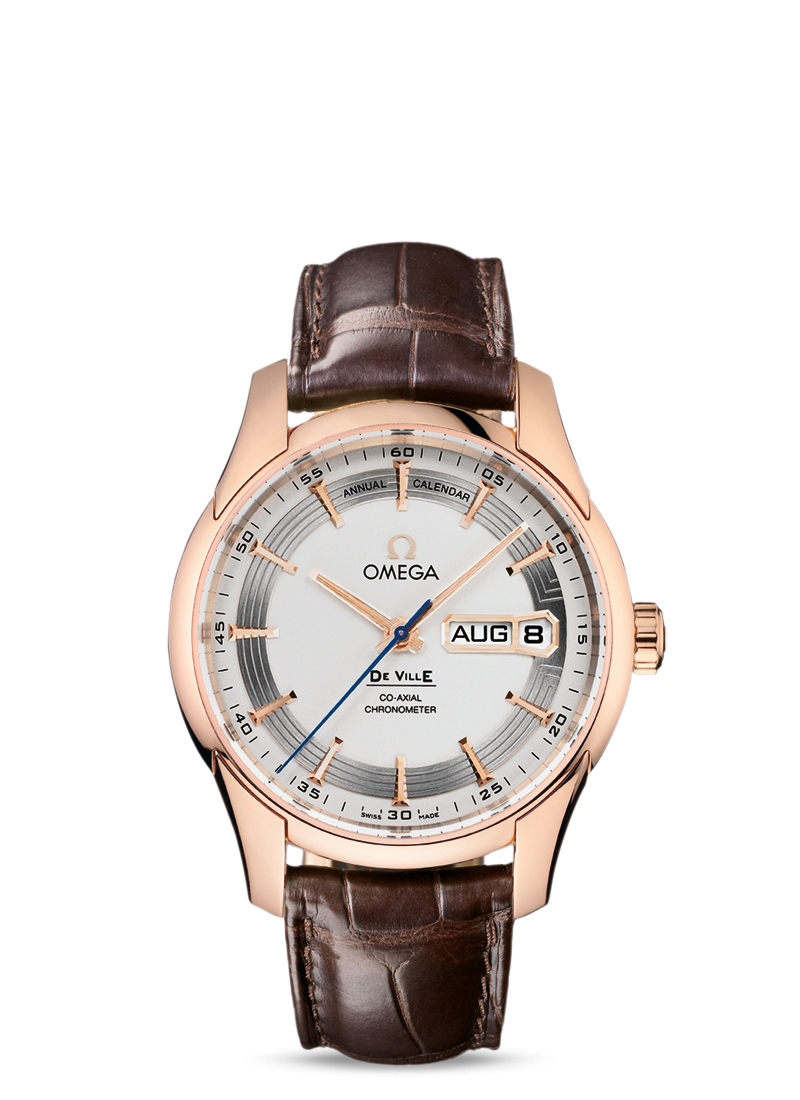
These watches do tend to be very sensitive to polishing and abuse as one would expect from 18k gold, so it tends to be important to find one that has been taken care of and avoid any that have been treated roughly.
The only gold model that isn't red gold is the reference 431.63.41.22.01.001 18K white gold annual calendar, which is a limited edition of 160 units. This watch comes on strap only and uses the rose gold-trimmed Calibre 8611 movement.
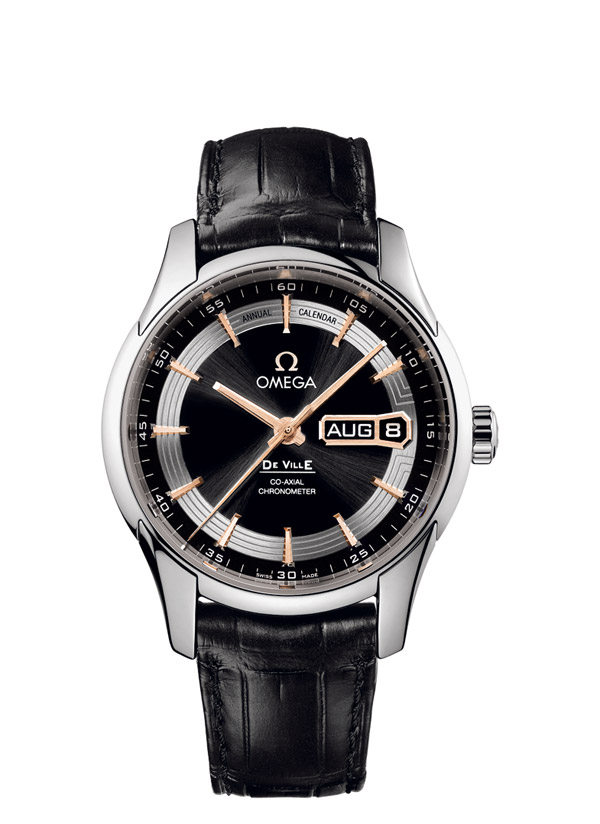
Prices for the various gold models have come down from their MSRP, but they are still not cheap by any means and when bracelet versions in particular come up for sale, there tends to be a lot of demand. Understandably so, given these are possibly the closest thing Omega has made to the Constellation Deluxe of the golden era in recent times. Simply beautiful.
Platinum Skeleton Limited Edition
The final, and most special Hour Vision of all came out in 2011. This watch, reference 431.93.41.21.64.001 was a limited edition of 88 units made out of solid platinum, and features a very unique movement, Calibre 8403, with no date, and a significantly skeletonized design.
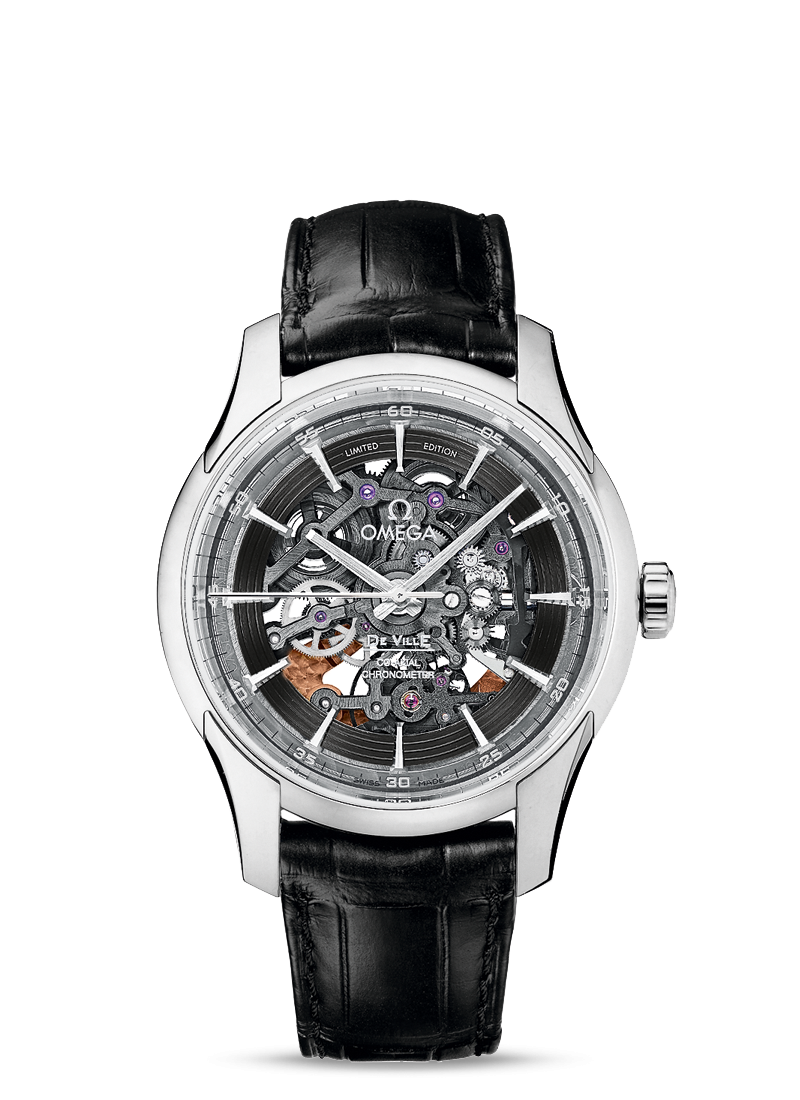
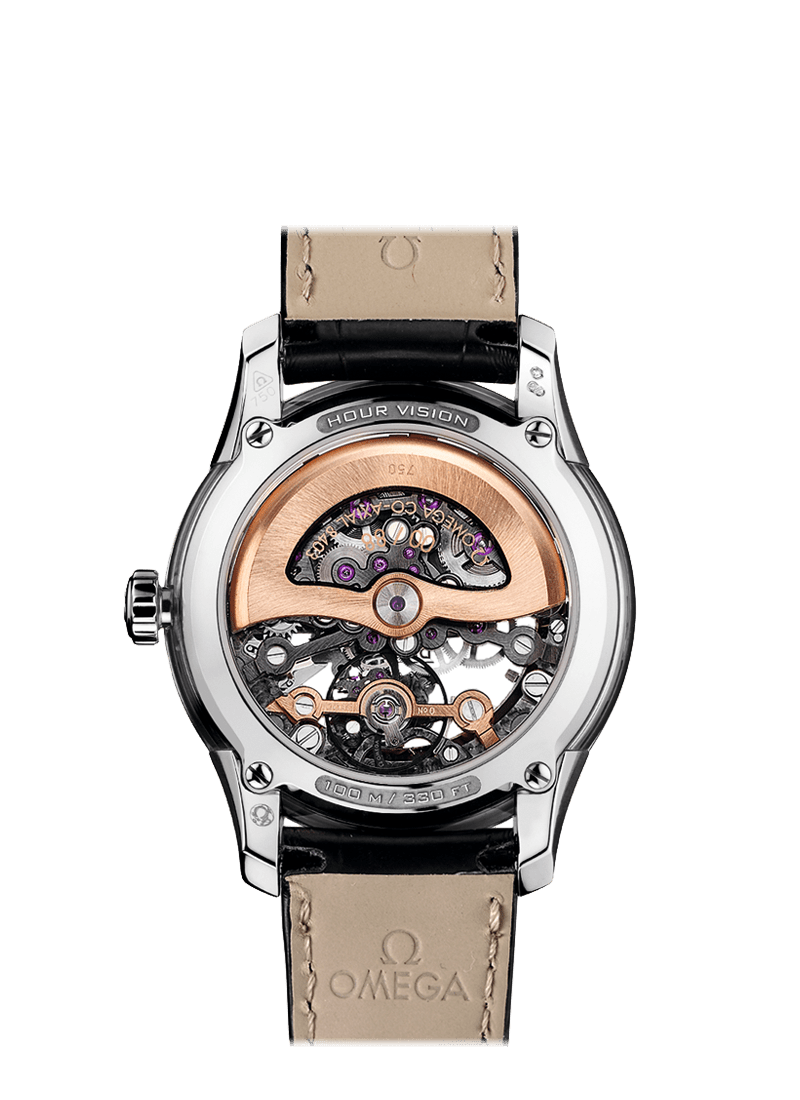
This is the only Hour Vision without date and removed it to prevent the date-wheel getting in the way of the view of the astonishingly beautiful movement through the dial.
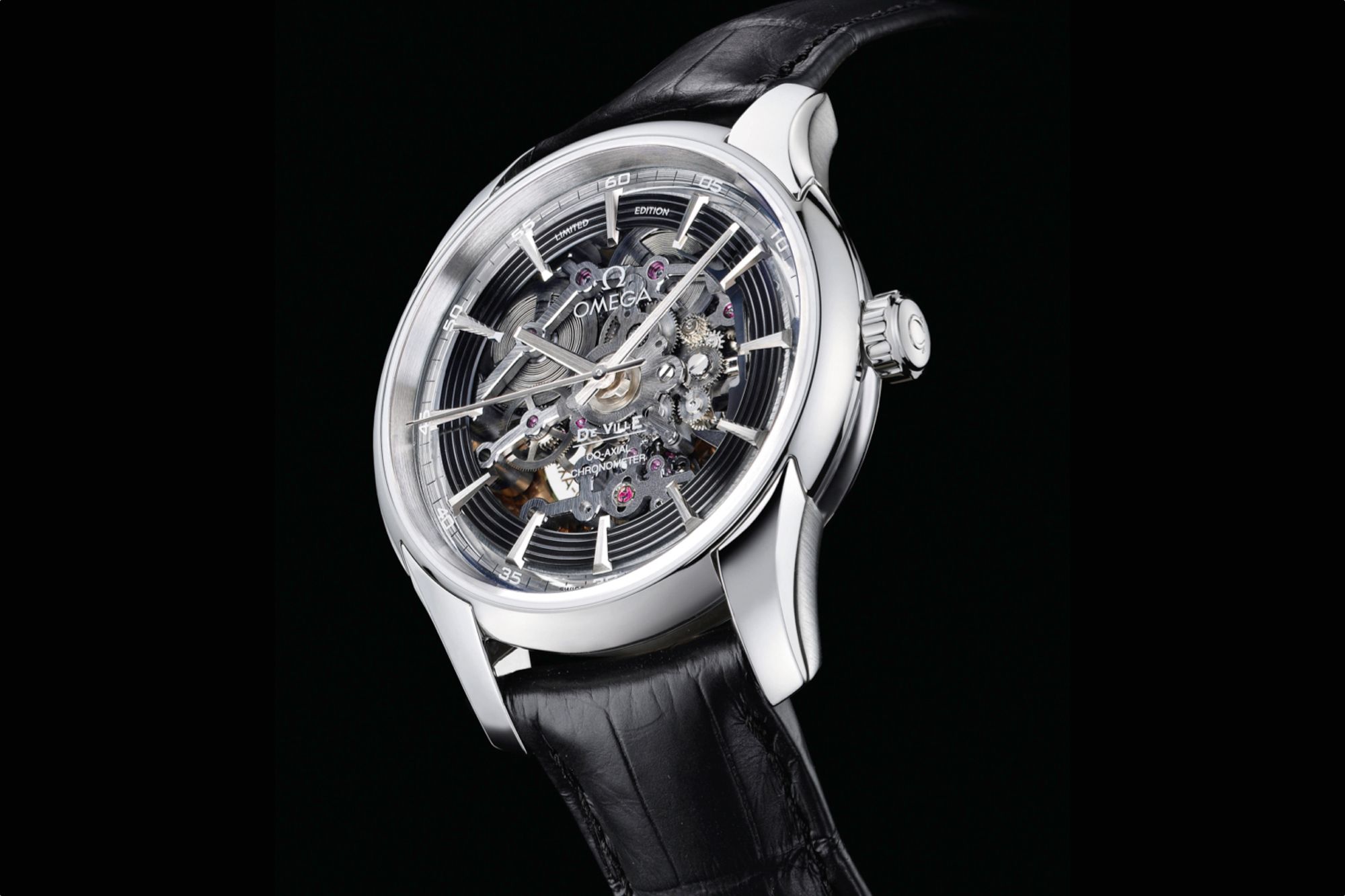
Another unusual feature on this limited edition is the fact that the Omega logo and dial text are not printed onto the dial, as there is no dial. Instead, they are etched into the sapphire crystal of the watch. A similar effect is achieved in back, where the 18k solid gold rotor actually has a sapphire insert of its own, which has text etched into it also.
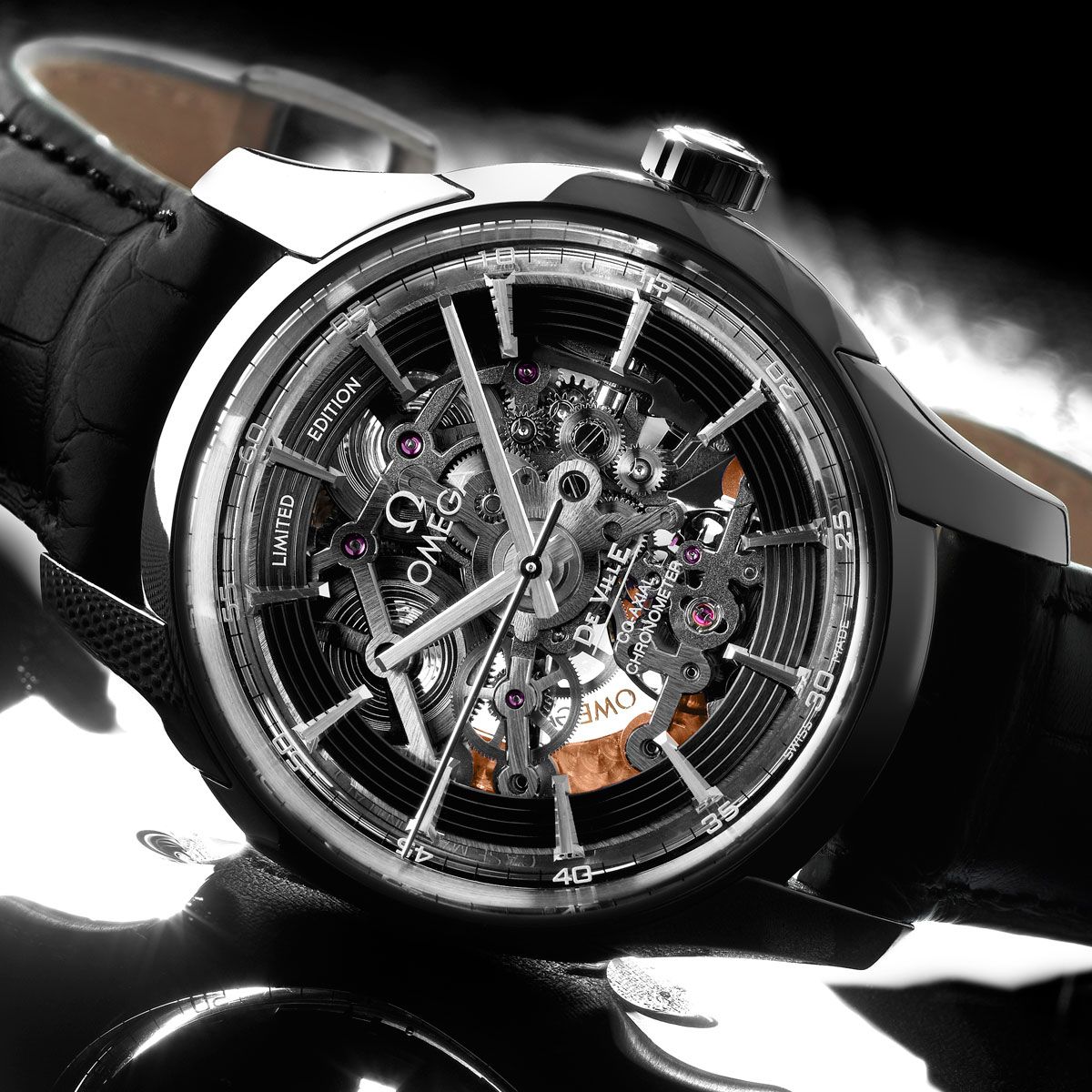
These watches are only available on leather strap, and while the 88 produced is a very low number, they do appear for sale quite often, and at prices well under the initial MSRP, though still far from being cheap.
Buying
The Hour Vision was produced for a remarkably long time, with some still being made even 11 years later in 2017. There have been a very large number of them produced in all metals and colors during that time and most of them have held up quite well condition wise.
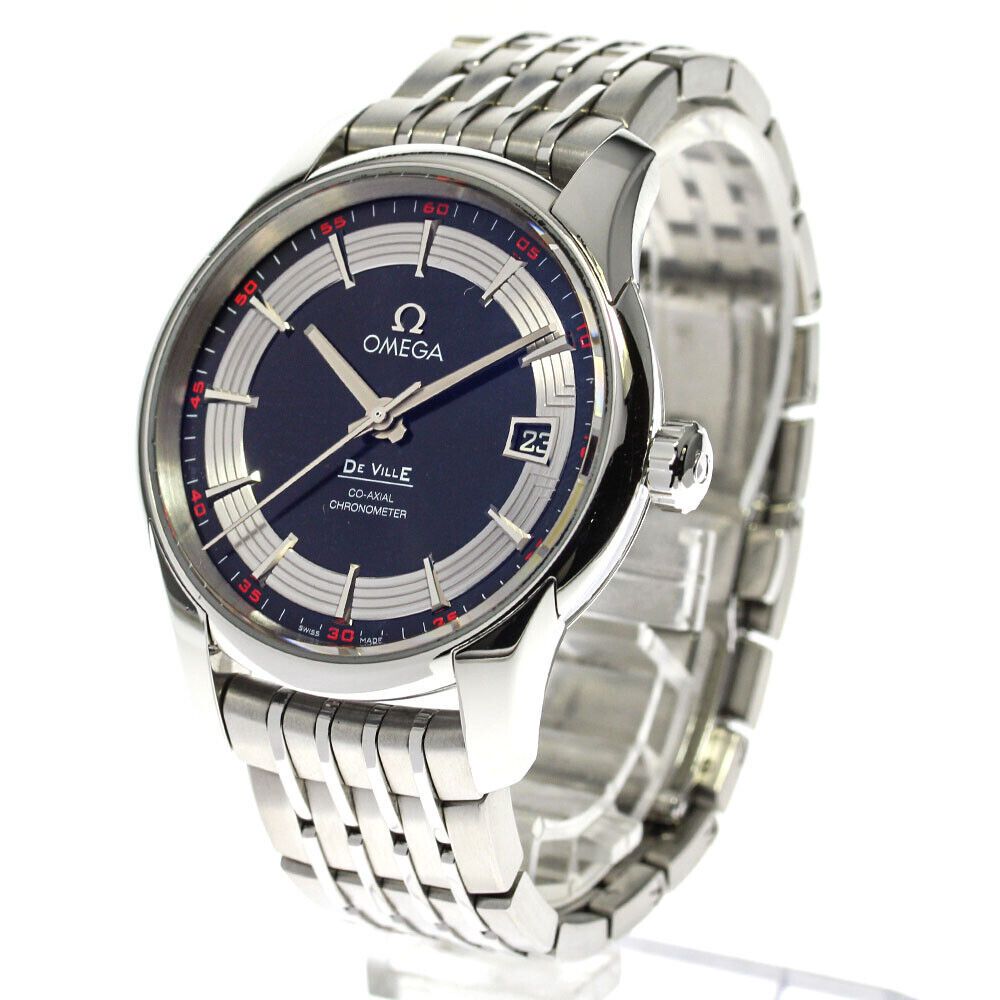
The watch that is much better known and most frequently cross-shopped against the Hour Vision is the Aqua Terra Calibre 8500. These watches are very similar, being both powered by the same movement and being similar in size and style. The Aqua Terra has lume, which will matter to people who like that, but in terms of design, finishing, and materials, the Hour Vision is in general just a significantly better watch. In spite of this, prices are very similar between the two, probably due to the Hour Vision being a bit less known and few people realising how cheap they are.
The best deals in the best condition tend to be found on forum sales listings, but there is always a large supply on both eBay and Chrono24. It should be noted that while these watches were by no means Japanese exclusives, they were very popular in Japan as well as Singapore and Hong Kong, and the number of clean examples in those countries is very high, even for solid gold.
The bracelet is quite costly to add after the fact, so it is important to factor that into the purchase price if a watch comes on strap. If you want the Orbis blue edition, strap is the only option and if you want a bracelet, you will have no choice but to buy that separately.
Servicing will be due on most Hour Vision models at this point, and this can be handled for a reasonable price by an independent, it does need to be factored into the purchase price.
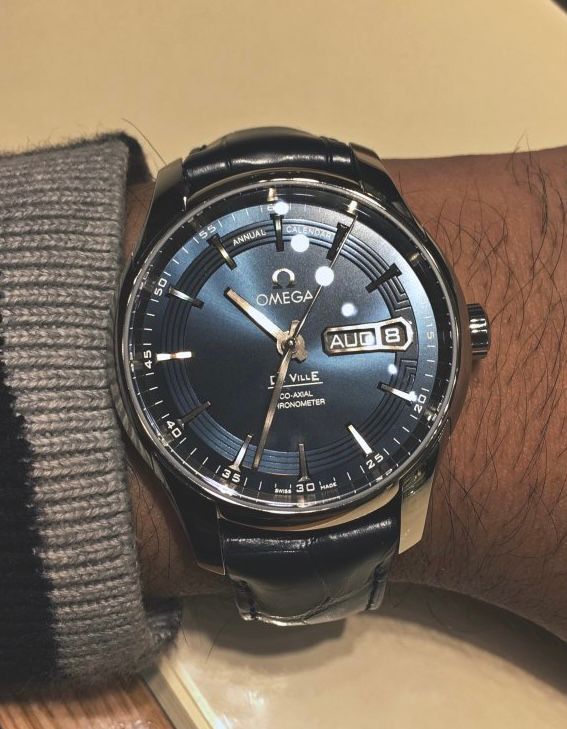
The annual calendars are slightly more costly but are a very useful complication if you are "one watch" kind of person, just be aware that the increased height may not be for everyone.
The red gold models are costly but absolutely worth it. Once again, the best deals on these tend to come from Asia where there are more of these floating around than there are in western nations. If you look hard enough a clean gold edition can be had for a few thousand under $20,000, on bracelet. The platinum limited edition skeleton Hour Vision has been changing hands in the mid-$30,000 range recently as of late 2022 and while they're hard to find, they're simply amazing.
At their current price point, the Hour Vision line represent remarkable value for a watch that represents a true high point for Omega and a significant milestone in the brand's history.
Discussion thread on Omegaforums can be found here:
